New England: Difference between revisions
| (76 intermediate revisions by 4 users not shown) | |||
| Line 2: | Line 2: | ||
{{Infobox country | {{Infobox country | ||
|conventional_long_name = | |conventional_long_name = Commonwealth of New England | ||
|native_name = | |native_name = | ||
|common_name = New England | |common_name = New England | ||
| Line 8: | Line 8: | ||
|image_coat = Alternative New England Coat of Arms.png | |image_coat = Alternative New England Coat of Arms.png | ||
|symbol_type = Coat of Arms | |symbol_type = Coat of Arms | ||
|national_motto = ''An appeal to heaven'' | |national_motto = ''An appeal to heaven''<br />{{raise|0.1em|{{small|"Invocātiō apud caelum"}}}} | ||
|national_anthem = | |national_anthem = | ||
|image_map = Map of the Commonwealth.png | |image_map = Map of the Commonwealth.png | ||
|alt_map = | |map_width = 275px | ||
|alt_map = | |||
|map_caption = Map of the Commonwealth | |map_caption = Map of the Commonwealth | ||
|capital = [[ | |capital = [[New Haven, CT|New Haven]] | ||
|largest_city = Boston | |largest_city = Boston | ||
|official_languages = English | |official_languages = English | ||
|recognized_languages = | |recognized_languages = | ||
|ethnic_groups = | |ethnic_groups = Irish American: 18.4% <br>Franco-American: 1.2% <br>Italian American: 20.1% <br>Polish American: 6.3% <br>Jewish American: 5.9% <br>German American: 10.9% <br>African American: 7.8%<br>Anglo-American: 29.3% <br>Asian American: 0.1% | ||
|demonym = New English | |demonym = New English | ||
|government_type = Constitutional Federal Republic | |government_type = Constitutional Federal Republic | ||
| Line 23: | Line 24: | ||
|leader_name1 = [[W. Avarell Harriman]] | |leader_name1 = [[W. Avarell Harriman]] | ||
|leader_title2 = Vice President | |leader_title2 = Vice President | ||
|leader_name2 = [[ | |leader_name2 = [[Maurice Tobin]] | ||
|legislature = Congress | |legislature = Congress | ||
|upper_house = [[Senate (New England)|Senate]] | |upper_house = [[Senate (New England)|Senate]] | ||
| Line 46: | Line 47: | ||
|area = | |area = | ||
|area_km2 = | |area_km2 = | ||
|area_sq_mi = | |area_sq_mi = 149,136 | ||
|area_footnote = | |area_footnote = | ||
|percent_water = | |percent_water = | ||
| Line 52: | Line 53: | ||
|area_label2 = | |area_label2 = | ||
|area_data2 = | |area_data2 = | ||
|population_estimate = | |population_estimate = 33,252,000 | ||
|population_estimate_rank = | |population_estimate_rank = | ||
|population_estimate_year = 1950 | |population_estimate_year = 1950 | ||
|population_density_km2 = | |population_density_km2 = | ||
|population_density_sq_mi = | |population_density_sq_mi = 222.96 | ||
|population_density_rank = | |population_density_rank = | ||
|GDP_nominal = | |GDP_nominal = 286,698,744,000 | ||
|GDP_nominal_year = | |GDP_nominal_year = 1950 | ||
|GDP_nominal_per_capita = | |GDP_nominal_per_capita = 8,622 | ||
|GDP_nominal_per_capita_rank = | |GDP_nominal_per_capita_rank = | ||
|HDI = | |HDI = | ||
| Line 80: | Line 81: | ||
New England, officially the Commonwealth of New England, is a sovereign nation located in North America. New England is bordered by the Dominion of Canada to her north and The | '''New England''', officially the Commonwealth of New England, is a sovereign nation located in North America. New England is bordered by the Dominion of [[Canada]] to her north and The [[Democratic People's Federation of America]] (PFA) to her south. The population of the country is concentrated in its large metropolitan areas. The most populous areas are the New York City metropolitan area followed by the Boston metropolitan area and Philadelphia metropolitan area. The New England hinterland in the northern states have towns scattered throughout the various mountainous and forested regions. Aside from these, much of New England is rural and marked by large national parks and historic sites. New England is a constitutional federal republic with its capital located in New Haven. The largest city in New England is New York City which serves as the nation's economic hub and which alongside the second largest city of Boston serve as cultural and commercial centers. New England has a separation of powers between its Executive, Judicial and Legislative branches. | ||
==History== | ==History== | ||
| Line 87: | Line 88: | ||
New England had been the Northeastern region of the United States of America prior to the Second American Civil War which saw the downfall of the United States. An interstate gridlock had taken shape in May, 1937 due to the controversial coup d'etat launched by General Douglas MacArthur on April 28th. Despite attempts at negotiations, soon a civil war had broken out between the MacArthurists, Syndicalists, Longists and a movement in the Pacific saw the secession of California, Oregon, Washington and Nevada to form the Pacific States of America. In the midst of the gridlock between states, a meeting between New England Governors took place on June 8th in which the Governors resolved to write a letter to the Dominion of Canada requesting protection during the hardships. The Canadian Government approved this request and sent a military detachment across the American Border on June 16th. Despite orders from General Douglas MacArthur to leave sovereign American soil, National Guard divisions from each of the New England States stood by the decision of their respective governors and the New England states ceased contact with the Federal Government. | New England had been the Northeastern region of the United States of America prior to the Second American Civil War which saw the downfall of the United States. An interstate gridlock had taken shape in May, 1937 due to the controversial coup d'etat launched by General Douglas MacArthur on April 28th. Despite attempts at negotiations, soon a civil war had broken out between the MacArthurists, Syndicalists, Longists and a movement in the Pacific saw the secession of California, Oregon, Washington and Nevada to form the Pacific States of America. In the midst of the gridlock between states, a meeting between New England Governors took place on June 8th in which the Governors resolved to write a letter to the Dominion of Canada requesting protection during the hardships. The Canadian Government approved this request and sent a military detachment across the American Border on June 16th. Despite orders from General Douglas MacArthur to leave sovereign American soil, National Guard divisions from each of the New England States stood by the decision of their respective governors and the New England states ceased contact with the Federal Government. | ||
As the Second American Civil War began to brew, the states resolved to select a Provisional President who would coordinate state efforts, and Percival P. Baxter was selected to serve as the first Provisional President on June 21st and was to direct coordinating efforts from Boston. President Baxter was granted powers to merge New England State National Guard forces into the New England Defense Force which was mobilized and sent to the New York border to deter any attempts at attacking the New English. By July it was clear that the Civil War was not to be brief as the Federal forces had been routed from the Carolinas and pockets had begun to take shape as Syndicalist militias surrounded federal garrisons in Kentucky and Missouri. Therefore it was resolved that the New English would need to be prepared for the worst. With approval in each of the State Legislatures, a Unilateral Declaration of Independence from the United States was signed on July 16th, and President Baxter called for a Second Hartford Convention to establish an American continuity government in New England. Adopting the American Constitution as its basis, the Hartford Convention carried on until October 31st organizing a New England federal government, declaring itself the Commonwealth of New England, adopting a flag and new currency and concluding with a Halloween Resolution which established New Haven as the 'indefinite provisional capital'. | As the Second American Civil War began to brew, the states resolved to select a Provisional President who would coordinate state efforts, and Percival P. Baxter was selected to serve as the first Provisional President on June 21st and was to direct coordinating efforts from Boston. President Baxter was granted powers to merge New England State National Guard forces into the New England Defense Force which was mobilized and sent to the New York border to deter any attempts at attacking the New English. By July it was clear that the Civil War was not to be brief as the Federal forces had been routed from the Carolinas and pockets had begun to take shape as Syndicalist militias surrounded federal garrisons in Kentucky and Missouri. Therefore it was resolved that the New English would need to be prepared for the worst. With approval in each of the State Legislatures, a Unilateral Declaration of Independence from the United States was signed on July 16th, and President Baxter called for a Second Hartford Convention to establish an American continuity government in New England. Adopting the American Constitution as its basis, the Hartford Convention carried on until October 31st organizing a New England federal government, declaring itself the Commonwealth of New England, adopting a flag and new currency and concluding with a Halloween Resolution which established New Haven as the 'indefinite provisional capital'. | ||
As the Second American Civil War intensified in through 1938 and the Federal position began to weaken in early 1939, 'Operation Patriot' was authorized with approval from the Canadian government. As United States forces were being routed from Ohio, New England issued a non-interference order to the United States authorities and sent in troops to occupy New York first which was accomplished by Mid-March. Soon 'Operation Patriot' was expanded as Canadian forces arrived to aid in the occupation and forces were sent into New Jersey in early April. With US forces being pushed into West Virginia and the fall of Pittsburgh on April 8th, a final order was given to establish the Susquehanna river as a natural western boundary to provide for the defense of the New English Commonwealth and to prevent the fall of Philadelphia and Scranton into the hands of the Syndicalists. This operation was carried out throughout mid-April, but with Federal government compliance was successfully executed. Plans were drawn up for the occupation of the Delmarva Peninsula, however the Canadians saw this as too risky and having the potential to draw them directly into the American Civil War. Without Canadian military assistance, the New English would not be able to extend their reach into the peninsula and after the fall of Baltimore on May 2nd, the plans were abandoned and instead construction began on a fortification network. | |||
The occupation zones were administered by joint New English - Canadian force, and conscription in New England as well as recruiting in occupied areas intensified to provide for an all-American defense force. Seeing the need for popular consensus, the New English government called for a snap-election to be held in July within the currently admitted states. Having left retirement to govern New England, Percival Baxter saw this as an opportunity to return to his retirement, and instead Hiram Bingham III was elected as the second Provisional President. President Bingham was seen as excellent for the role in part because of his extensive military background and having been the former governor of Connecticut, he helped to organize the New Haven political system in its early development. He also pushed for the admission of occupied states into New England to legitimize New England's rule over those areas and begin the process of integration for Americans living in New York, New Jersey and Eastern Pennsylvania. Furthermore, to normalize election years and set them to match those of the United States, the Congress established 1940 as the first election year for a constitutional government, putting an end to provisional rule. | |||
As the election approached, parties reorganized, with President Bingham and former Republicans reorganizing the Republican Party while the Democrats struggled to reorganize that election year. The result was a Republican super-majority in both houses of Congress and the re-election of President Bingham. In his first year in office, Bingham spearheaded the effort to admit New York to New England, which was accomplished in early 1941. In addition to this, a fortification network was established along the Alleghany River and a massive fallback line backed by fortified positions was erected along the Appalachian mountain regions. Finally, Air-Defense investments were significantly increased to provide for the defense of both civilian aircraft at major airports and industrial centers across the country. | |||
===New England in the Second World War=== | |||
When the Entente launched the war to reclaim the home isles against the Syndicalist forces in Europe in 1942, New England was quick to follow suit in declaring war, a move which would prove controversial when the 1942 congressional elections came up as a bipartisan coalition of 'dove' Republicans and Democrats challenged Bingham's decision due to the looming Syndicalist threat to the south which had all but consolidated its rule as it dealt with Longist militias and Federalist holdouts. However, New England now found itself committed to the war with a national conscription policy being enacted and massive reserves being activated. | |||
WIP | |||
===Post-War New England=== | ===Post-War New England=== | ||
As the Second World War came to an end, a great sense of enthusiasm was felt throughout New England as the global tide of Syndicalism had finally turned. Over two hundred thousand New English veterans returned home from France and the British Isles as fighting had winded down, and the New English economy quickly began to surge. Corresponding with this was a massive 'Baby Boom' starting in October of 1946 and persisting through the holiday season. WIP | |||
==Geography== | ==Geography== | ||
===States=== | ===States=== | ||
{| class="wikitable sortable plainrowheaders" style="text-align: center;" | |||
|+ States of the Commonwealth of New England | |||
|- | |||
!scope="col" colspan=2 rowspan=2|Flag, name &<br>[[List of U.S. state abbreviations|postal abbreviation]]<ref name=USPSabbreviations>{{cite web| url=https://pe.usps.com/text/pub28/28apb.htm| title=Appendix B: Two–Letter State and possession Abbreviations| work=Postal Addressing Standards| publisher=United States Postal Service| location=Washington, D.C.| date=May 2015| accessdate=March 3, 2018| archive-url=https://web.archive.org/web/20180305202445/https://pe.usps.com/text/pub28/28apb.htm| archive-date=March 5, 2018| url-status=live| df=mdy-all}}</ref> | |||
!scope="col" colspan=2|Cities | |||
!scope="col" rowspan=2|Ratification<br/>or admission{{efn-ua|The original 13 states became [[Sovereignty|sovereign]] in July 1776 upon agreeing to the [[United States Declaration of Independence]], and each joined the first Union of states between 1777 and 1781, upon ratifying the [[Articles of Confederation]].<ref>{{cite book| last = Jensen| first = Merrill| title = The Articles of Confederation: An Interpretation of the Social-Constitutional History of the American Revolution, 1774–1781| year = 1959| publisher = University of Wisconsin Press| isbn = 978-0-299-00204-6| pages = xi, 184 }}</ref> These states are presented in the order in which each ratified the 1787 Constitution, thus joining the present federal Union of states. Subsequent states are listed in the order of their admission to the Union, and the date given is the official establishment date set by [[Act of Congress]]. ''For further details, see [[List of U.S. states by date of admission to the Union]]''}} | |||
!scope="col" rowspan=2|Population<br>{{efn-ua|2019 estimate}}<ref name="AnnualEstUS">{{cite web |url=https://www2.census.gov/programs-surveys/popest/tables/2010-2019/state/totals/nst-est2019-01.xlsx?# |title=Annual Estimates of the Resident Population for the United States, Regions, States, and Puerto Rico: April 1, 2010 to July 1, 2019 |format= |website=2010-2019 Population Estimates |publisher=[[United States Census Bureau]], Population Division |date=December 30, 2019 |accessdate=January 27, 2020}}</ref> | |||
!scope="col" colspan=2|Total area<ref name=areameasurements>{{cite web| title=State Area Measurements and Internal Point Coordinates| url=https://www.census.gov/geo/reference/state-area.html| publisher=U.S. Census Bureau| location=Washington, D.C.| quote=... provides land, water and total area measurements for the 50 states, the District of Columbia, Puerto Rico and the Island Areas. The area measurements were derived from the Census Bureau's Master Address File/Topologically Integrated Geographic Encoding and Referencing (MAF/TIGER®) database. The land and water areas, ... reflect base feature updates made in the MAF/TIGER® database through August, 2010.| accessdate=March 3, 2018| archive-url=https://web.archive.org/web/20180316004512/https://www.census.gov/geo/reference/state-area.html| archive-date=March 16, 2018| url-status=live| df=mdy-all}}</ref> | |||
!scope="col" colspan=2|Land area<ref name=areameasurements/> | |||
!scope="col" colspan=2|Water area<ref name=areameasurements/> | |||
!scope="col" rowspan=2|[[List of United States congressional districts|Number<br>of Reps.]] | |||
|- | |||
!scope="col"|Capital | |||
!scope="col"|Largest<ref name="State and Local Government Finances and Employment">{{cite web| url=https://www.census.gov/compendia/statab/2012/tables/12s0448.pdf| archive-url=https://web.archive.org/web/20111017142616/http://www.census.gov/compendia/statab/2012/tables/12s0448.pdf| url-status=dead| archive-date=October 17, 2011| title=State and Local Government Finances and Employment| year=2012| publisher=[[United States Census Bureau]]| page=284| accessdate=July 8, 2013}}</ref> | |||
!scope="col" class="unsortable"|mi<sup>2</sup> | |||
!scope="col"|km<sup>2</sup> | |||
!scope="col" class="unsortable"|mi<sup>2</sup> | |||
!scope="col"|km<sup>2</sup> | |||
!scope="col" class="unsortable"|mi<sup>2</sup> | |||
!scope="col"|km<sup>2</sup> | |||
|- | |||
!scope="row"|{{flagicon image|Flag of Connecticut.svg}} | |||
|CT | |||
|[[Hartford, Connecticut|Hartford]] | |||
|[[Bridgeport, Connecticut|Bridgeport]] | |||
|{{dts|Jan 9, 1788}} | |||
|{{right|2,016,719}} | |||
|{{cvt|5543.41|mi2|km2|0|adj=ri0|abbr=values|sortable=on|disp=table}} | |||
|{{cvt|4842.36|mi2|km2|0|adj=ri0|abbr=values|sortable=on|disp=table}} | |||
|{{cvt|701.06|mi2|km2|0|adj=ri0|abbr=values|sortable=on|disp=table}} | |||
|{{right|6}} | |||
|- | |||
!scope="row"|{{flagicon image|Flag of Maine.svg}} | |||
|ME | |||
|[[Augusta, Maine|Augusta]] | |||
|[[Portland, Maine|Portland]] | |||
|{{dts|Mar 15, 1820}} | |||
|{{right|917,865}} | |||
|{{cvt|35379.74|mi2|km2|0|adj=ri0|abbr=values|sortable=on|disp=table}} | |||
|{{cvt|30842.92|mi2|km2|0|adj=ri0|abbr=values|sortable=on|disp=table}} | |||
|{{cvt|4536.82|mi2|km2|0|adj=ri0|abbr=values|sortable=on|disp=table}} | |||
|{{right|3}} | |||
|- | |||
!scope="row"|{{nowrap|{{flagicon image|Flag of Massachusetts.svg}}{{efn-ua|name=statenomenclature}}}} | |||
|MA | |||
|colspan=2|[[Boston]] | |||
|{{dts|Feb 6, 1788}} | |||
|{{right|4,686,213}} | |||
|{{cvt|10554.39|mi2|km2|0|adj=ri0|abbr=values|sortable=on|disp=table}} | |||
|{{cvt|7800.06|mi2|km2|0|adj=ri0|abbr=values|sortable=on|disp=table}} | |||
|{{cvt|2754.33|mi2|km2|0|adj=ri0|abbr=values|sortable=on|disp=table}} | |||
|{{right|12}} | |||
|- | |||
!scope="row"|{{flagicon image|Flag of New Hampshire.svg}} | |||
|NH | |||
|[[Concord, New Hampshire|Concord]] | |||
|[[Manchester, New Hampshire|Manchester]] | |||
|{{dts|Jun 21, 1788}} | |||
|{{right|532,143}} | |||
|{{cvt|9349.16|mi2|km2|0|adj=ri0|abbr=values|sortable=on|disp=table}} | |||
|{{cvt|8952.65|mi2|km2|0|adj=ri0|abbr=values|sortable=on|disp=table}} | |||
|{{cvt|396.51|mi2|km2|0|adj=ri0|abbr=values|sortable=on|disp=table}} | |||
|{{right|2}} | |||
|- | |||
!scope="row"|{{flagicon image|Flag of New Jersey.svg}} | |||
|NJ | |||
|[[Trenton, New Jersey|Trenton]] | |||
|[[Newark, New Jersey|Newark]] | |||
|{{dts|Dec 18, 1787}} | |||
|{{right|4,872,962}} | |||
|{{cvt|8722.58|mi2|km2|0|adj=ri0|abbr=values|sortable=on|disp=table}} | |||
|{{cvt|7354.22|mi2|km2|0|adj=ri0|abbr=values|sortable=on|disp=table}} | |||
|{{cvt|1368.36|mi2|km2|0|adj=ri0|abbr=values|sortable=on|disp=table}} | |||
|{{right|14}} | |||
|- | |||
!scope="row"|{{flagicon image|Flag of New York.svg}} | |||
|NY | |||
|[[Albany, New York|Albany]] | |||
|[[New York City|New York]] | |||
|{{dts|Jul 26, 1788}} | |||
|{{right|14,861,392}} | |||
|{{cvt|54554.98|mi2|km2|0|adj=ri0|abbr=values|sortable=on|disp=table}} | |||
|{{cvt|47126.4|mi2|km2|0|adj=ri0|abbr=values|sortable=on|disp=table}} | |||
|{{cvt|7428.58|mi2|km2|0|adj=ri0|abbr=values|sortable=on|disp=table}} | |||
|{{right|45}} | |||
|- | |||
!scope="row"|{{flagicon image|Flag of Pennsylvania.svg}}{{efn-ua|name=statenomenclature}} | |||
|PA | |||
|colspan=2|[[Philadelphia]] | |||
|{{dts|Dec 12, 1787}} | |||
|{{right|4,204,477}} | |||
|{{cvt|46054.34|mi2|km2|0|adj=ri0|abbr=values|sortable=on|disp=table}} | |||
|{{cvt|44742.7|mi2|km2|0|adj=ri0|abbr=values|sortable=on|disp=table}} | |||
|{{cvt|1311.64|mi2|km2|0|adj=ri0|abbr=values|sortable=on|disp=table}} | |||
|{{right|13}} | |||
|- | |||
!scope="row"|{{flagicon image|Flag of Rhode Island.svg}}{{efn-ua|Officially the "State of Rhode Island and Providence Plantations".}} | |||
|RI | |||
|colspan=2|[[Providence, Rhode Island|Providence]] | |||
|{{dts|May 29, 1790}} | |||
|{{right|786,211}} | |||
|{{cvt|1544.89|mi2|km2|0|adj=ri0|abbr=values|sortable=on|disp=table}} | |||
|{{cvt|1033.81|mi2|km2|0|adj=ri0|abbr=values|sortable=on|disp=table}} | |||
|{{cvt|511.07|mi2|km2|0|adj=ri0|abbr=values|sortable=on|disp=table}} | |||
|{{right|2}} | |||
|- | |||
!scope="row"|{{flagicon image|Flag of Vermont.svg}} | |||
|VT | |||
|[[Montpelier, Vermont|Montpelier]] | |||
|[[Burlington, Vermont|Burlington]] | |||
|{{dts|Mar 4, 1791}} | |||
|{{right|379,683}} | |||
|{{cvt|9616.36|mi2|km2|0|adj=ri0|abbr=values|sortable=on|disp=table}} | |||
|{{cvt|9216.66|mi2|km2|0|adj=ri0|abbr=values|sortable=on|disp=table}} | |||
|{{cvt|399.71|mi2|km2|0|adj=ri0|abbr=values|sortable=on|disp=table}} | |||
|{{right|1}} | |||
|- | |||
|} | |||
===Cities=== | ===Cities=== | ||
===Geographic Areas=== | ===Geographic Areas=== | ||
| Line 107: | Line 241: | ||
! Leader | ! Leader | ||
! Seats in the [[House of Representatives (New England)|House of Representatives]] | ! Seats in the [[House of Representatives (New England)|House of Representatives]] | ||
! Seats in the [[Senate (New England)|Senate]] | |||
! Bloc | ! Bloc | ||
|- | |- | ||
| Line 112: | Line 247: | ||
| style="background-color:#2E2EFE"| '''Democratic Party'''<br><small> | | style="background-color:#2E2EFE"| '''Democratic Party'''<br><small> | ||
| Center-Right | | Center-Right | ||
| Populism, Immigrant Interests, Trade Unionism, Protectionism | | Populism, Social Conservatism, Immigrant Interests, Trade Unionism, Protectionism | ||
| W. Averell Harriman | | W. Averell Harriman | ||
|<center>{{Infobox political party/seats| | |<center>{{Infobox political party/seats|55|103|hex=#2E2EFE}}</center> | ||
|<center>{{Infobox political party/seats|7|18|hex=#2E2EFE}}</center> | |||
| style="background:#2E2EFE; color:black"|<center>Populist</center> | | style="background:#2E2EFE; color:black"|<center>Populist</center> | ||
|- | |- | ||
| Line 120: | Line 256: | ||
| style="background-color:#FF0000"| '''Republican Party'''<br><small> | | style="background-color:#FF0000"| '''Republican Party'''<br><small> | ||
| Center-Left | | Center-Left | ||
| Conservatism, Free Trade, Internationalism, Pro-Entente | | Liberal Conservatism, Free Trade, Internationalism, Pro-Entente | ||
| Thomas E. Dewey | | Thomas E. Dewey | ||
|<center>{{Infobox political party/seats| | |<center>{{Infobox political party/seats|31|103|hex=#FF0000}}</center> | ||
|<center>{{Infobox political party/seats|10|18|hex=#FF0000}}</center> | |||
| style="background:#FF0000; color:black"|<center>Conservative</center> | | style="background:#FF0000; color:black"|<center>Conservative</center> | ||
|- | |- | ||
| Line 129: | Line 266: | ||
| Center | | Center | ||
| State's Rights, Opposition to Welfare, Deregulation, Constitutionalism, Skepticism towards Entente | | State's Rights, Opposition to Welfare, Deregulation, Constitutionalism, Skepticism towards Entente | ||
| | | Sean Lawrie | ||
|<center>{{Infobox political party/seats| | |<center>{{Infobox political party/seats|10|103|hex=#FFFF00}}</center> | ||
|<center>{{Infobox political party/seats|1|18|hex=#FFFF00}}</center> | |||
| style="background:#FFFF00; color:black"|<center>Constitutionalist</center> | | style="background:#FFFF00; color:black"|<center>Constitutionalist</center> | ||
|- | |- | ||
| Line 136: | Line 274: | ||
| style="background-color:#358201"| '''Commonwealth Party'''<br><small> | | style="background-color:#358201"| '''Commonwealth Party'''<br><small> | ||
| Right | | Right | ||
| | | Traditional Conservatism, Anglo-American Interests, Pro-Business, Full Commonwealth Membership | ||
| Clark Kensington | | Clark Kensington | ||
|<center>{{Infobox political party/seats| | |<center>{{Infobox political party/seats|4|103|hex=#358201}}</center> | ||
|<center>{{Infobox political party/seats|0|18|hex=#358201}}</center> | |||
| style="background:#358201; color:black"|<center>Commonwealth</center> | | style="background:#358201; color:black"|<center>Commonwealth</center> | ||
|- | |||
|- | |||
|} | |||
===List of Presidents of New England=== | |||
{{legend2|#DDDDDD|{{wp|Independent (politics)|Independent}}|border=1px solid #AAAAAA}}<br> | |||
{|class="wikitable" width="100%" | |||
!align="left" width="10"|No | |||
!width="100"|Picture | |||
!width="200" width="25%"|Name | |||
!align="left" width="10"|Term | |||
!align="center" colspan="2" width="20%"|Tenure | |||
!align="left" width="30%"|Presidential mandate | |||
!align="left" width="15%"|Affiliation | |||
|- | |||
|colspan=8 style="background-color:#C0C0C0;"|<center>[[File:Flag of New England 1988.png|30px]] '''Provisional President of the Commonwealth of New England''' [[File:Flag of New England 1988.png|30px]]</center> | |||
|- | |||
|align="center" style="background: #DDDDDD;"|{{color|white|'''1'''}} | |||
|align="center" |[[File:Percival Baxter.jpg|100px]] | |||
|align="center" |[[Percival P. Baxter]]<br><small>(1792-1880)</small> | |||
|align="center" style="background: #DDDDDD;"|{{color|white|'''1'''}} | |||
|<small>21 June</small><br>1937 | |||
|<small>19 July</small><br>1939 | |||
|''Elected by New England State Convention'' | |||
|Independent | |||
|- | |||
|align="center" style="background: #DDDDDD;"|{{color|white|'''2'''}} | |||
|align="center" |[[File:Hiram Bingham III.jpg|100px]] | |||
|align="center" |[[Hiram Bingham III]]<br><small>(1792-1880)</small> | |||
|align="center" style="background: #DDDDDD;"|{{color|white|'''1'''}} | |||
|<small>19 July</small><br>1939 | |||
|<small>5 November</small><br>1940 | |||
|''Elected in 1939 Snap Election'' | |||
|Independent | |||
|- | |||
|} | |||
{{legend2|#000080|[[Democratic Party (New England)|Democratic Party]]|border=1px solid #AAAAAA}} {{wp|National conservatism}}, {{Wp|Protectionism}}<br> | |||
{{legend2|#DC241f|[[Republican Party (New England)|Republican Party]]|border=1px solid #AAAAAA}} {{wp|Conservative liberalism}}, {{wp|Free Trade}}<br> | |||
{|class="wikitable" width="100%" | |||
!align="left" width="10"|No | |||
!width="100"|Picture | |||
!width="200" width="25%"|Name | |||
!align="left" width="10"|Term | |||
!align="center" colspan="2" width="20%"|Tenure | |||
!align="left" width="30%"|Presidential mandate | |||
!align="left" width="15%"|Affiliation | |||
|- | |||
|colspan=8 style="background-color:#C0C0C0;"|<center>[[File:New England Flag 1950.png|30px]] '''President of the Commonwealth of New England''' [[File:New England Flag 1950.png|30px]]</center> | |||
|- | |||
|align="center" style="background: #DC241f;"|{{color|white|'''1'''}} | |||
|align="center" |[[File:Hiram Bingham III.jpg|100px]] | |||
|align="center" |[[Hiram Bingham III]]<br><small>(1792-1880)</small> | |||
|align="center" style="background: #DDDDDD;"|{{color|white|'''1'''}} | |||
|<small>5 November</small><br>1940 | |||
|<small>20 January</small><br>1945 | |||
|''1940 New England General Election'' | |||
|[[Republican Party (New England)|Republican Party]] | |||
|- | |||
|- | |||
|align="center" rowspan="3" style="background: #000080;"|{{color|white|'''2'''}} | |||
|align="center" rowspan="3"|[[File:W. Averell Harriman.png|100px]] | |||
|align="center" rowspan="3"|[[W. Averell Harriman]]<br><small>(1864-1939)</small> | |||
|align="center" style="background: #DDDDDD;"|{{color|white|'''1'''}} | |||
|<small>7 November</small><br>1944 | |||
|<small>20 January</small><br>1949 | |||
|''1944 New England General Election'' | |||
|[[Democratic Party (New England)|Democratic Party]] | |||
|- | |||
|align="center" style="background: #DDDDDD;"|{{color|white|'''2'''}} | |||
|<small>2 November</small><br>1948 | |||
|<small>20 January</small><br>1952 | |||
|''1948 New England General Election'' | |||
|[[Democratic Party (New England)|Democratic Party]] | |||
|- | |||
|- | |- | ||
|} | |} | ||
==Foreign Relations== | ==Foreign Relations== | ||
===The British Commonwealth=== | |||
[[File:Entente Poster.jpg|thumb|British Commonwealth Poster]] | |||
In the Commonwealth of New England, it is widely understood that the Canadian government and by proxy the British were responsible for preventing the fall of New England to the revolutionary syndicalist forces which control much of the rest of the former United States of America. Reflecting this, the Commonwealth of New England is an observing state in the British Commonwealth of Nations and a full member of the IEDC. Additionally, New England is a member of the Entente, a British and French led military and diplomatic alliance which includes other notable states such as Spain, Portugal and Brazil. The British Commonwealth, by proxy of its Canadian government-in-exile was the first country to recognize the Commonwealth of New England and to set up a consulate in New Haven which remains to the present. Diplomatic visits between the countries are common, and there is a significant degree of co-dependence as New England controls a powerful component of the former American military-industrial engine. This investment therefore manifests in a significant amount of profit made by New English military and industrial sales to the administrations British colonial possessions. With a comparable strength economy to the United Kingdom, the two countries avoid competition through low customs barriers and low tariffs, through cross-investment, and through the establishment of Anglo-American trust companies. | |||
Criticism exists over the degree to which New England has come to be close to the British, with American nationalists considering it an adulteration of American culture and contrary to the message of the American founding fathers and Constitutionalists questioning the constitutionality of being an observer state in the British Commonwealth of Nations. In contrast, there also exists an anglophilic movement in New England, best characterized by the Commonwealth Party which calls for greater economic integration into the British Commonwealth of Nations and a shift towards New English identity. | |||
===The Entente=== | ===The Entente=== | ||
Shortly after New England's independence, the British immediately began lobbying on the behalf of the New English for membership in the Entente. Despite some reservations from other members, New England was quickly admitted and given full membership status. New England has since admission become an invaluable member of the Entente, and benefited greatly economically from sales and leases of military equipment to fellow member states. During the Second World War, New England was obligated to aid in the liberation of Europe and the reconquest of the British Isles and New English soldiers were renowned for their bravery and selfless service during the war. The war to end the Syndicalist grip over Western Europe was culturally seen as a necessary step towards liberating the United States and relations with Entente members only strengthened after their shared victory in the war. These relations remain strong, though ideological differences with the Portuguese and Spanish in particular have presented occasional difficulty. | |||
More recently, security risks relating to delays in fighter jet development have been alleviated by the mass sale of French Dassault Hurricane fighter jets at a premium rate. While sales of most heavy military equipment are prioritized towards British colonies first, the Portuguese, Spanish and French also are keen on purchasing New English firearms and military vehicles. In particular, New English helicopters have come to be quite popular among many entente members. | |||
===The Reich Pact=== | |||
[[File:TIAP.png|thumb|The Irish American Partnership Seal]] | |||
Relations between New England and members of the German led Reich Pact vary in strength. Relations are strongest with the Irish whom with the New English take part in a bilateral trade and cultural exchange agreement known as the Irish-American Partnership (IAP). After the Irish, relations are amiable with the German Empire with whom they engage in trade, and until 1949 even participated in joint naval exercises, though after tensions flared up between the French and Germans in West Africa relations are no longer as strong as they were during the Second World War. Increasingly, relations with the Reich Pact have begun to chill due to tensions between the Germans and the French and British. However, trade agreements and even some cross-investment occurs between New England and Reich Pact member states. | |||
===The Danube-Adriatic Confederation=== | |||
Relations between New England and the Danube-Adriatic Confederation (DAC) are mildly amiable. Little more than diplomatic and symbolic gestures of friendship exist between the countries, though in recent memory the two had been closer due to shared goals during and in the immediate aftermath of the Second World War. Due to chilled relations between Entente members such as Sardinia-Piedmont, Serbia and Greece with members of the DAC, the New English are inclined to support their allies leading to some diplomatic tensions between New England and DAC member states. | |||
===The Greater Co-Prosperity Sphere=== | |||
Relations between New England and the Greater Co-Prosperity Sphere (GCPS) are neutral. Led by the Japanese, there is a great hostility among much of the New English population towards the GCPS due to what many consider an effective occupation of the American pacific. The New English Commonwealth has criticized Japanese imperialism and the rapid settlement of Japanese in the American Pacific region. However, as the Japanese and the GCPS engage in heavily effective espionage operations and frontier conflicts with the Democratic People's Federation of America (DPFA), New England finds itself temporarily geo-politically aligned with the GCPS. In particular operations by Kempeitai agents in Denver and throughout Texas have significantly undermined the stability of the DPFA, as has Japanese funding of militant groups throughout the Great Plains and American South. | |||
===Democratic People's Federation of America=== | |||
Relations between the Democratic People's Federation of America (DPFA) and New England are near-hostile. Frequent military drills and standoffs between the land, sea and air forces of the two countries are not uncommon and both fund dissident organizations in each other's countries. Standoffs have occasionally had fatal consequences as New England has shot down several DPFA aircraft over New England airspace and minor firefights have occurred along the Demilitarized Zone, though such incidents have become less common since the election of DPFA President Meyer London. Despite this, both maintain a sizable military force within range of the DMZ and seldom establish diplomatic communications. The DPFA has on several occasions declared New England an illegal British occupation zone and refuses to acknowledge the civil administration of New England, only ever contacting the New English armed forces which it considers a "defiant counter-revolutionary military organization". | |||
==New England Armed Forces== | ==New England Armed Forces== | ||
===Army=== | ===Army=== | ||
The New England Army is the land-based component of the New English Armed Forces, and represents the largest portion of its personnel. It is responsible to the Government of the Commonwealth of New England and headed by the Chief of the New English Army, [Insert Name Here], who reports to the Minister of War [Insert Name Here], who reports directly to the President of the Commonwealth of New England. | |||
As of 1950, the New England Army employs numberxhere personnel including the [[Army Air Corps (New England)|Army Air Corps]], [[New England National Guard]], and [[New England Fire Brigades]]. Though limited conscription exists in New England, the New England Army is a majority volunteer force and therefore soldiers are considered professionals. | |||
(For further reading, see main article: [[New England Army]]) | |||
====Army Air Corps==== | ====Army Air Corps==== | ||
The New England Army Air Corps is the aviation corps within the New English Army and coordinates with the New England Coast Guard Air Corps to defend New English airspace. The New England Army Air Corps is headed by the High Commandant of the New England Army Air Corps, [Insert Name Here]. The largest New England airbases are the Hanscom Airbase, New Boston Airbase, and the JB McGuire–Dix–Lakehurst Airbase. | |||
====National Guard==== | ====National Guard==== | ||
====Fire | The New England National Guard is the federal authority binding together the Commonwealth's state national guard units. Each state in New England maintains its own state national guard and the state national guards are responsible to the their respective governors. The National Guard is responsible for augmenting the federal army in the case of war, and in peacetime augments the federal army as is needed. In addition to this, the National Guard engages in crowd control and national disaster recovery. | ||
====Fire Brigade==== | |||
[[File:New England Fire and Rescue.png|thumb|New England Fire Brigade Emblem]] | |||
The New England Fire Brigade is the federal authority coordinating fire department efforts and logistics in the Commonwealth of New England. Fire departments are fully funded and run on a professional basis and the fire brigade is an alternative option provided for conscripts. The Fire Brigade is tasked with fire and safety operations which local fire departments had operated on a volunteer basis prior to the passage of the National Fire and Safety Act of 1944. In addition, the Fire Brigade is tasked with national forest management and can be partially mobilized as an auxiliary police force in times of crisis. This partial mobilization is limited only to non-essential personnel who would be able to aid local police departments. | |||
===Coast Guard=== | ===Coast Guard=== | ||
The New England Coast Guard is the marine-based component of the New English Armed Forces, tasked with coastal defense, and rescue operations while also maintaining a major combat component. It is responsible to the Government of the Commonwealth of New England and headed by the Chief of the New English Coast Guard, [Insert Name Here], who reports to the Minister of War [Insert Name Here], who reports directly to the President of the Commonwealth of New England. | |||
As of 1950, the New England Coast Guard employs numberxhere personnel including the Coast Guard Air Corps, the Merchant Marine, and Coastal Defense Corps. Though limited conscription exists in New England, the New England Coast Guard is a majority volunteer force and therefore soldiers are considered professionals. | |||
====Coast Guard Air Corps==== | |||
The Coast Guard Air Corps (CAIP), is the aviation corps of the New England Coast Guard and coordinates with the New England Army Air Corps to defend New English airspace. The CAIP is headed by the Director of the CAIP [Insert name here]. The CAIP operates several rescue stations along the Atlantic Coast and Lake Erie. In addition to these rescue stations, the CAIP shares space with the New England Army Air Corps at the JB McGuire–Dix–Lakehurst Airbase and at some major airports. | |||
====Merchant Marine==== | ====Merchant Marine==== | ||
The Merchant Marine refers to either New England civilian mariners, or to New England civilian and federally owned merchant vessels. Both the civilian mariners and the merchant vessels are managed by a combination of the government and private sectors, and engage in commerce or transportation of goods and services in and out of the navigable waters of New England. The Merchant Marine primarily transports cargo and passengers during peacetime; in times of war, the Merchant Marine can be an auxiliary to the New England Coast Guard, and can be called upon to deliver military personnel and materiel for the military. Merchant Marine officers may also be commissioned as military officers by the Department of Defense. | |||
====Coastal Defense Corps==== | ====Coastal Defense Corps==== | ||
[[File:CDC poster.jpg|thumb|Civil Defense Force organizational icons]] | |||
The New England Coastal Defense Corps (CDC) is an administrative corps responsible for coastal, harbor, and anti-aircraft defense of New England. The Defense Corps is primarily responsible for coastal artillery and anti-air positions throughout the country, which are operated by sailors in the New England Coast Guard. The Coastal Defense Corps is headed by the Director of the CDC, Admiral John Brannox. | |||
===Civil Defense Force=== | ===Civil Defense Force=== | ||
The Civil Defense Force is a volunteer based force which is used to augment the Armed forces and for public works projects. It may also be used in conjunction with the National Guard for riot control and national disaster response, and provides a critical role in improving the nation's military infrastructure. It is responsible to the Government of the Commonwealth of New England and headed by the Chief of the Civil Defense Force, [Insert Name Here], who reports to the Minister of War [Insert Name Here], who reports directly to the President of the Commonwealth of New England. | |||
====Civil Air Patrol==== | ====Civil Air Patrol==== | ||
The Civil Air Patrol is a volunteer organization with an aviation-minded membership. It performs three congressionally assigned key missions: emergency services, which includes search and rescue (by air and ground) and disaster relief operations; aviation education for the general public; and cadet programs for teenage youth. CAP also performs non-auxiliary missions for various governmental and private agencies, such as local law enforcement and the New England Red Cross. | |||
===Equipment=== | |||
====Weapons==== | |||
{| class="wikitable" | |||
! style="text-align: left; background: #aabccc;"|Weapon | |||
! style="text-align: left; background: #aabccc;"|Picture | |||
! style="text-align: left; background: #aabccc;"|Origin | |||
! style="text-align: left; background: #aabccc;"|Type | |||
! style="text-align: left; background: #aabccc;"|Notes | |||
|- | |||
! style="align: center; background: lavender;" colspan="7" | '''Pistols''' | |||
|- | |||
| Colt M1911 | |||
| [[File:1952 US Army M1911.jpg|200px]] | |||
| {{flagicon image|Flag of the United States (1912–1959).svg}} United States of America<br /> {{flagicon image|New_England_Flag_1950.png}} [[New England]] | |||
| Handgun | |||
| Used throughout the New England Armed Forces as service pistol. | |||
|- | |||
! style="align: center; background: lavender;" colspan="7" | '''Submachine guns''' | |||
|- | |||
| [[Thompson Submachinegun]] | |||
| [[File:Campbell_Thompson.jpg|200px]] | |||
| {{flagicon image|Flag of the United States (1912–1959).svg}} United States of America<br /> {{flagicon image|New_England_Flag_1950.png}} [[New England]] | |||
| Submachinegun | |||
| Used by New England Army ground forces. | |||
|- | |||
| [[Sterling mk4 Submachinegun]] | |||
| [[File:Sterling SMG.JPG|200px]] | |||
| {{flagicon image|UK flag m v.gif}} United Kingdom | |||
| Submachinegun | |||
| Used by New England Army ground forces. | |||
|- | |||
! style="align: center; background: lavender;" colspan="7" | '''Rifles''' | |||
|- | |||
| [[M1903 Springfield Rifle]] | |||
| [[File:M1903 Springfield - USA - 30-06 - Armémuseum.jpg|200px]] | |||
| {{flagicon image|Flag of the United States (1912–1959).svg}} United States of America<br /> {{flagicon image|New_England_Flag_1950.png}} [[New England]] | |||
| Battle Rifle | |||
| Used by National Guard and Reservists, currently being stockpiled and exported. | |||
|- | |||
| [[M1 Garand]] | |||
| [[File:M1 Garand rifle USA noBg.jpg|200px]] | |||
| {{flagicon image|Flag of the United States (1912–1959).svg}} United States of America<br /> {{flagicon image|New_England_Flag_1950.png}} [[New England]] | |||
| Battle rifle | |||
| Used throughout New English Army as standard issue rifle. | |||
|- | |||
| [[M1 Carbine]] | |||
| [[File:M1 Carbine Mk I - USA - Armémuseum.jpg|200px]] | |||
| {{flagicon image|Flag of the United States (1912–1959).svg}} United States of America<br /> {{flagicon image|New_England_Flag_1950.png}} [[New England]] | |||
| Battle rifle | |||
| Used throughout New English Army, being stockpiled to succeed M1 Garand. | |||
|- | |||
| [[Winchester Model 70]] | |||
| [[File:Winchestermodel70.jpg|200px]] | |||
| {{flagicon image|Flag of the United States (1912–1959).svg}} United States of America<br /> {{flagicon image|New_England_Flag_1950.png}} [[New England]] | |||
| Marksman Rifle | |||
| Used by marksmen in New English Army | |||
|- | |||
! style="align: center; background: lavender;" colspan="7" | '''Shotguns''' | |||
|- | |||
| [[Browning Auto-5]] | |||
| [[File:RemingtonMd11.JPG|200px]] | |||
| {{flagicon image|Flag of the United States (1912–1959).svg}} United States of America<br /> {{flagicon image|New_England_Flag_1950.png}} [[New England]] | |||
| Shotgun | |||
| Used by New English Army special forces. | |||
|- | |||
! style="align: center; background: lavender;" colspan="7" | '''Machine guns''' | |||
|- | |||
| [[M1941 Johnson Machine gun]] | |||
| [[File:JOHNSONMG1.jpg|200px]] | |||
| {{flagicon image|Flag of the United States (1912–1959).svg}} United States of America<br /> {{flagicon image|New_England_Flag_1950.png}} [[New England]] | |||
| Light Machine gun | |||
| Used by New English Army | |||
|- | |||
| [[M1919 Browning Machinegun]] | |||
| [[File:Browning M1919a.png|200px]] | |||
| {{flagicon image|Flag of the United States (1912–1959).svg}} United States of America<br /> {{flagicon image|New_England_Flag_1950.png}} [[New England]] | |||
| Medium Machine gun | |||
| Used by New English Army | |||
|- | |||
| [[M2 Browning]] | |||
| [[File:M2_Browning,_Mus%C3%A9e_de_l%27Arm%C3%A9e.jpg|200px]] | |||
| {{flagicon image|Flag of the United States (1912–1959).svg}} United States of America<br /> {{flagicon image|New_England_Flag_1950.png}} [[New England]] | |||
| Heavy machine gun | |||
| Used by New English Army | |||
|- | |||
! style="align: center; background: lavender;" colspan="7" | '''Anti-materiel weapons''' | |||
|- | |||
| [[Boys anti-tank rifle Mk I]] | |||
| [[File:Boys Mk I AT Rifle.jpg|200px]] | |||
| {{flagicon image|Canada Flag KR.png}} Canada <br /> {{flagicon image|UK flag m v.gif}} United Kingdom | |||
| Anti-Material Rifle | |||
| | |||
|- | |||
| [[M1 Bazooka]] | |||
| [[File:Soldier with Bazooka M1.jpg|200px]] | |||
| {{flagicon image|Flag of the United States (1912–1959).svg}} United States of America<br /> {{flagicon image|New_England_Flag_1950.png}} [[New England]] | |||
| Anti-tank rocket launcher | |||
| | |||
|- | |||
| [[M1 Mortar]] | |||
| [[File:"Members of a Negro mortar company of the 92nd Division pass the ammunition and heave it over at the Germans in an almos - NARA - 535546.jpg|200px]] | |||
| {{flagicon image|Flag of the United States (1912–1959).svg}} United States of America<br /> {{flagicon image|New_England_Flag_1950.png}} [[New England]] | |||
| Mortar | |||
|- | |||
! style="align: center; background: lavender;" colspan="7" | '''Special Weapons''' | |||
|- | |||
| [[M2 Flamethrower]] | |||
| [[File:USm2flamethrower.jpg|200px]] | |||
| {{flagicon image|Flag of the United States (1912–1959).svg}} United States of America<br /> {{flagicon image|New_England_Flag_1950.png}} [[New England]] | |||
| Flamethrower | |||
|- | |||
| | |||
|} | |||
====Ground Vehicles==== | |||
{| class="wikitable" | |||
! style="text-align: left; background: #aabccc;"|Vehicle | |||
! style="text-align: left; background: #aabccc;"|Picture | |||
! style="text-align: left; background: #aabccc;"|Origin | |||
! style="text-align: left; background: #aabccc;"|Type | |||
! style="text-align: left; background: #aabccc;"|In service | |||
! style="text-align: left; background: #aabccc;"|Notes | |||
|- | |||
! style="align: center; background: lavender;" colspan="7" | '''Armour''' | |||
|- | |||
| [[M2 Buford]] | |||
| [[File:The British Army in the United Kingdom 1939-45 H17816.jpg|200px]] | |||
| {{flagicon image|Flag of the United States (1912–1959).svg}} United States of America | |||
| Light Tank | |||
| 102 | |||
| Relegated to training operations, being exported to British colonies for auxiliary use. | |||
|- | |||
| [[M24 Sheridan]] | |||
| [[File:M24 Chaffee 33314 4CV pic07.JPG|200px]] | |||
| {{flagicon image|New_England_Flag_1950.png}} [[New England]] | |||
| Light Tank | |||
| 1,028 | |||
| Thousands exported to Entente members | |||
|- | |||
| [[M46 Kearny]] | |||
| [[File:Marines-tank-Korea-19530705.JPEG|200px]] | |||
| {{flagicon image|New_England_Flag_1950.png}} [[New England]] | |||
| Medium Tank | |||
| 660 | |||
| | |||
|- | |||
! style="align: center; background: lavender;" colspan="7" | '''Armoured Cars''' | |||
|- | |||
| [[M3 Scout Car]] | |||
| [[File:The British Army in the United Kingdom 1939-45 H17571.jpg|200px]] | |||
| {{flagicon image|Flag of the United States (1912–1959).svg}} United States of America <br> {{flagicon image|New_England_Flag_1950.png}} [[New England]] | |||
| Armored Car | |||
| 2,875 | |||
| Originally produced by United States Army, variants exist globally | |||
|- | |||
| [[M8 Greyhound]] | |||
| [[File:M8old1.JPG|200px]] | |||
| {{flagicon image|Flag of the United States (1912–1959).svg}} United States of America <br> {{flagicon image|New_England_Flag_1950.png}} [[New England]] | |||
| Armored Car | |||
| 907 | |||
| Originally produced by United States Army, variants exist globally | |||
|- | |||
| [[S1 Scout Car]] | |||
| [[File:Ford-S1-armored-car-haugh.jpg|200px]] | |||
| {{flagicon image|Australasian Confederation.png}} [[Australasia]] | |||
| Armored Car | |||
| 24 | |||
| Produced by Ford's Australasian Division, used for training purposes. | |||
|- | |||
! style="align: center; background: lavender;" colspan="7" | '''Armored Carriers''' | |||
|- | |||
| [[M3 Half Track]] | |||
| [[File:Halftrack-fort-knox-1.jpg|200px]] | |||
| {{flagicon image|Flag of the United States (1912–1959).svg}} United States of America | |||
| Armoured Carrier | |||
| 2,280 | |||
| | |||
|- | |||
| [[Universal Carrier]] | |||
| [[File:Universal carrier (mortar carrier) 9-08-2008 14-53-48 (2).JPG|200px]] | |||
| {{flagicon image|Canada Flag KR.png}} Canada <br /> {{flagicon image|UK flag m v.gif}} United Kingdom | |||
| Armored Carrier | |||
| 1,520 | |||
| | |||
|- | |||
! style="align: center; background: lavender;" colspan="7" | '''Trucks''' | |||
|- | |||
| [[Dodge WC Series]] | |||
| [[File:Dodge WC-51 during the VII Aircraft Picnic in Kraków.jpg|200px]] | |||
| {{flagicon image|Flag of the United States (1912–1959).svg}} United States of America <br> {{flagicon image|New_England_Flag_1950.png}} [[New England]] | |||
| Truck | |||
| 6,422 | |||
| | |||
|- | |||
! style="align: center; background: lavender;" colspan="7" | '''Unarmoured Vehicles''' | |||
|- | |||
| [[Willy's MB]] | |||
| [[file:Covered Willy's jeep Wings Over Wine Country 2007.JPG|200px]] | |||
| {{flagicon image|Flag of the United States (1912–1959).svg}} United States of America <br> {{flagicon image|New_England_Flag_1950.png}} [[New England]] | |||
| Utility Truck | |||
| 3,422 | |||
| | |||
|- | |||
! style="align: center; background: lavender;" colspan="7" | '''Artillery''' | |||
|- | |||
| [[M39 Armored Utility Vehicle]] | |||
| [[File:M39-AUV-Korea-19530529.jpg|200px]] | |||
| {{flagicon image|New_England_Flag_1950.png}} [[New England]] | |||
| Artillery Tractor | |||
| 450 | |||
| Converted from Hellcat tractors | |||
|- | |||
|- | |||
! style="align: center; background: lavender;" colspan="7" | '''Fire Engines''' | |||
|- | |||
| [[Seagrave Fire Truck]] | |||
| [[file:Seagrave Fire Truck.jpg|200px]] | |||
| {{flagicon image|New_England_Flag_1950.png}} [[New England]] | |||
| Utility Truck | |||
| 1,028 | |||
| | |||
|- | |||
| [[Mack Fire Truck]] | |||
| [[file:Mack Fire Truck.jpg|200px]] | |||
| {{flagicon image|New_England_Flag_1950.png}} [[New England]] | |||
| Utility Truck | |||
| 2,944 | |||
| | |||
|- | |||
|} | |||
====Aircraft==== | |||
{| class="wikitable" | |||
! style="text-align: left; background: #aabccc;"|Aircraft | |||
! style="text-align: left; background: #aabccc;"|Picture | |||
! style="text-align: left; background: #aabccc;"|Origin | |||
! style="text-align: left; background: #aabccc;"|Type | |||
! style="text-align: left; background: #aabccc;"|In service | |||
! style="text-align: left; background: #aabccc;"|Notes | |||
|- | |||
! style="align: center; background: lavender;" colspan="7" | '''Fighter aircraft''' | |||
|- | |||
| [[Dassault Hurricane]] | |||
| [[File:Dassault Ouragan.jpg|200px]] | |||
| {{flagicon image|Flag of France.png}} [[France]] | |||
| Fighter Jet | |||
| 264 | |||
| In active service | |||
|- | |||
| [[Lockheed P-80 Shooting Star]] | |||
| [[File:P80-1 300 (cropped).jpg|200px]] | |||
| {{flagicon image|New_England_Flag_1950.png}} [[New England]] | |||
| Fighter Jet | |||
| 566 | |||
| In active service | |||
|- | |||
| [[Lockheed F-94 Starfire]] | |||
| [[File:27th Fighter-Interceptor Squadron Lockheed F-94C-1-LO Starfire 51-13555.jpg|200px]] | |||
| {{flagicon image|New_England_Flag_1950.png}} [[New England]] | |||
| All-weather Interceptor Jet | |||
| 488 | |||
| In active service | |||
|- | |||
| [[Lockheed T-33 T-Bird]] | |||
| [[File:Lockheed NT-33A USAF.jpg|200px]] | |||
| {{flagicon image|New_England_Flag_1950.png}} [[New England]] | |||
| Trainer Jet | |||
| 120 | |||
| In active service, exported to entente members | |||
|- | |||
| [[Ryan FR Fireball]] | |||
| [[File:Ryan FR-1 Fireball VF-66 North Island 1945.jpg|200px]] | |||
| {{flagicon image|New_England_Flag_1950.png}} [[New England]] | |||
| Fighter Airplane | |||
| 70 | |||
| Stockpiled, hundreds have been sold to British colonial provinces. | |||
|- | |||
! style="align: center; background: lavender;" colspan="7" | '''Helicopters''' | |||
|- | |||
| [[Sikorsky S-55]] | |||
| [[File:Sikorsky S-55 inflight (altered).jpg|200px]] | |||
| {{flagicon image|New_England_Flag_1950.png}} [[New England]] | |||
| Utility Helicopter | |||
| 473 | |||
| Production underway, popular export to Entente | |||
|- | |||
| [[Sikorsky R-6, "Hoverfly"]] | |||
| [[File:S-49 Sikorsky R-6A USAF museum.jpg|200px]] | |||
| {{flagicon image|New_England_Flag_1950.png}} [[New England]] <br> {{flagicon image|Canada Flag KR.png}} [[Canada]] | |||
| Helicopter | |||
| 125 | |||
| Set aside for civilian sale | |||
|- | |||
| [[Sikorsky H-5]] | |||
| [[File:Sikorsky YH-5A USAF.jpg|200px]] | |||
| {{flagicon image|New_England_Flag_1950.png}} [[New England]] | |||
| Search and Rescue Helicopter | |||
| 328 | |||
| Primarily used by Coast Guard Air Corps | |||
|- | |||
| [[Bell 47 H-13G]] | |||
| [[File:Bell 47 (H-13G) medevac inflight bw.jpg|200px]] | |||
| {{flagicon image|New_England_Flag_1950.png}} [[New England]] | |||
| Medevac Helicopter | |||
| 82 | |||
| Some on loan to hospitals | |||
|- | |||
| [[Bell 47 H-13G]] | |||
| [[File:Bell 47 (H-13G) medevac inflight bw.jpg|200px]] | |||
| {{flagicon image|New_England_Flag_1950.png}} [[New England]] | |||
| Medevac Helicopter | |||
| 82 | |||
| Some on loan to hospitals | |||
|- | |||
| [[Piasecki HUP Retriever]] | |||
| [[File:HUP-2 from USS FD Roosevelt (CVA-42) in flight 1959.jpg|200px]] | |||
| {{flagicon image|New_England_Flag_1950.png}} [[New England]] | |||
| Transport Helicopter | |||
| 202 | |||
| Production ongoing | |||
|- | |||
| [[Hiller OH-23 Raven]] | |||
| [[File:OH-23 inflight colour photo.jpg|200px]] | |||
| {{flagicon image|New_England_Flag_1950.png}} [[New England]] | |||
| Multi-role Light Helicopter | |||
| 336 | |||
| Used throughout New England Armed Forces for various purposes, exported and sold for civilian use | |||
|- | |||
|} | |||
====Watercraft==== | |||
{| class="wikitable" | |||
! style="text-align: left; background: #aabccc;"|Vehicle | |||
! style="text-align: left; background: #aabccc;"|Picture | |||
! style="text-align: left; background: #aabccc;"|Origin | |||
! style="text-align: left; background: #aabccc;"|Type | |||
! style="text-align: left; background: #aabccc;"|In service | |||
! style="text-align: left; background: #aabccc;"|Notes | |||
|- | |||
! style="align: center; background: lavender;" colspan="7" | '''Patrol Ships''' | |||
|- | |||
| [[PT-class]] | |||
| [[File:USS PT-105.jpg|200px]] | |||
| {{flagicon image|New_England_Flag_1950.png}} [[New England]] | |||
| Patrol torpedo boat | |||
| 297 | |||
| | |||
|- | |||
! style="align: center; background: lavender;" colspan="7" | '''Destroyer Escorts''' | |||
|- | |||
| [[John C. Butler-class]] | |||
| [[File:USS John C. Butler (DE-339) underway in the Pacific Ocean on 1 March 1945 (80-G-264041).jpg|200px]] | |||
| {{flagicon image|New_England_Flag_1950.png}} [[New England]] | |||
| Destroyer Escort | |||
| 56 | |||
| 38 on loan to the United Kingdom, France and Brazil | |||
|- | |||
! style="align: center; background: lavender;" colspan="7" | '''Minesweepers''' | |||
|- | |||
| [[YMS1-class]] | |||
| [[File:Yms324.png|200px]] | |||
| {{flagicon image|New_England_Flag_1950.png}} [[New England]] | |||
| Minesweeper | |||
| 76 | |||
| | |||
|- | |||
| [[Aloe-class]] | |||
| [[File:USS ASH AN-7.jpg|200px]] | |||
| {{flagicon image|New_England_Flag_1950.png}} [[New England]] | |||
| Net-laying ship | |||
| 7 | |||
| Three on loan to France | |||
|- | |||
! style="align: center; background: lavender;" colspan="7" | '''Cruisers''' | |||
|- | |||
| [[Manchester-class cruiser]] | |||
| [[File:USS Cleveland (CL-55) underway at sea in late 1942 (NH 55173).jpg|200px]] | |||
| {{flagicon image|New_England_Flag_1950.png}} [[New England]] | |||
| Light Cruiser | |||
| 29 | |||
| 1 under repairs | |||
|- | |||
| [[Quincy-class cruiser]] | |||
| [[File:USS Baltimore (CA-68) anchored in Guantanamo Bay on 22 September 1954 (NH 52422).jpg|200px]] | |||
| {{flagicon image|New_England_Flag_1950.png}} [[New England]] | |||
| Light Cruiser | |||
| 14 | |||
| | |||
|- | |||
! style="align: center; background: lavender;" colspan="7" | '''Aircraft Carriers''' | |||
|- | |||
| [[Essex-class]] | |||
| [[File:USS Philippine Sea (CVA-47) underway at sea on 9 July 1955 (80-G-K-18429).jpg|200px]] | |||
| {{flagicon image|New_England_Flag_1950.png}} [[New England]] | |||
| Aircraft Carrier | |||
| {{bulleted list |''Essex'' |''Intrepid'' |''Yorktown''}} | |||
| | |||
|- | |||
| [[Brooklyn-class]] | |||
| [[File:USS Midway (CVB-41) steaming off the Firth of Clyde in September 1952.jpg|200px]] | |||
| {{flagicon image|New_England_Flag_1950.png}} [[New England]] | |||
| Aircraft Carrier | |||
| {{bulleted list |''Brooklyn'' | ''Hartford'' |''Hiram Bingham'' |''Percival P. Baxter''}} | |||
| | |||
|- | |||
! style="align: center; background: lavender;" colspan="7" | '''Submarines''' | |||
|- | |||
| [[Balao-class]] | |||
| [[File:USS Balao SS-285.jpg|200px]] | |||
| {{flagicon image|New_England_Flag_1950.png}} [[New England]] | |||
| Fleet submarine | |||
| 102 | |||
| 18 on loan to Portugal, Sardinia-Piedmont and Greece | |||
|- | |||
| [[Gato-class]] | |||
| [[File:USS Cavalla;0824408.jpg|200px]] | |||
| {{flagicon image|Flag of the United States (1912–1959).svg}} [[United States]] | |||
| Fleet submarine | |||
| 52 | |||
| | |||
|- | |||
| [[Tench-class]] | |||
| [[File:USStoro.jpg|200px]] | |||
| {{flagicon image|New_England_Flag_1950.png}} [[New England]] | |||
| Fleet submarine | |||
| 78 | |||
| Produced at Boston Naval Yard, 12 on loan to Brazil | |||
|- | |||
! style="align: center; background: lavender;" colspan="7" | '''Frigates''' | |||
|- | |||
| [[Bay-class]] | |||
| [[File:HMS Burghead Bay 1945 IWM FL 7265.jpg|200px]] | |||
| {{flagicon image|UK flag m v.gif}} [[United Kingdom]] | |||
| Light surveillance frigate | |||
| 12USS New Jersey (BB-62) | |||
| | |||
|- | |||
! style="align: center; background: lavender;" colspan="7" | '''Battleships''' | |||
|- | |||
| [[Iowa-class]] | |||
| [[File:New Jersey Sails.jpg|200px]] | |||
| {{flagicon image|Flag of the United States (1912–1959).svg}} [[United States]] | |||
| Battleship | |||
| {{bulleted list |''Iowa'' | ''New Jersey'' |''Missouri'' |''Wisconsin''}} | |||
| | |||
|- | |||
|-} | |||
{| class="wikitable" | |||
! style="text-align: left; background: #aabccc;"|Vehicle | |||
! style="text-align: left; background: #aabccc;"|Picture | |||
! style="text-align: left; background: #aabccc;"|Origin | |||
! style="text-align: left; background: #aabccc;"|Type | |||
! style="text-align: left; background: #aabccc;"|In service | |||
! style="text-align: left; background: #aabccc;"|Notes | |||
|- | |||
! style="align: center; background: lavender;" colspan="7" | '''Command and Replenishment Ships''' | |||
|- | |||
| [[Northampton-class]] | |||
| [[File:USS Northampton (CLC-1) underway c1959.jpg|200px]] | |||
| {{flagicon image|New_England_Flag_1950.png}} [[New England]] | |||
| Command Ship | |||
| 4 | |||
| Based on heavy-cruiser designs | |||
|- | |||
| [[Chester-class]] | |||
| [[File:USS Suamico (AO-49).jpg|200px]] | |||
| {{flagicon image|New_England_Flag_1950.png}} [[New England]] | |||
| Oiler Ship | |||
| 17 | |||
| | |||
|- | |||
| [[Dithmarschen-class]] | |||
| [[File:USS Conecuh (AO-110) underway in October 1946.jpg|200px]] | |||
| {{flagicon image|KR Flagge.png}} [[Germany]] | |||
| Oiler Ship | |||
| 5 | |||
| | |||
|- | |||
| [[Type C2-class]] | |||
| [[File:USS Whiteside (AKA-90) anchored in San Francisco Bay c1948.jpg|200px]] | |||
| {{flagicon image|New_England_Flag_1950.png}} [[New England]] | |||
| Ammunition Ship | |||
| 7 | |||
| | |||
|- | |||
! style="align: center; background: lavender;" colspan="7" | '''Rescue Ships''' | |||
|- | |||
| [[Diver-class]] | |||
| [[File:USS Diver (ARS-5).jpg|200px]] | |||
| {{flagicon image|New_England_Flag_1950.png}} [[New England]] | |||
| Rescue and salvage ship | |||
| 11 | |||
| | |||
|- | |||
! style="align: center; background: lavender;" colspan="7" | '''Hospital Ships''' | |||
|- | |||
| [[New Haven-class]] | |||
| [[File:USS Haven (AH-12) on 19 January 1954 (NH 98796).jpg|200px]] | |||
| {{flagicon image|New_England_Flag_1950.png}} [[New England]] | |||
| Hospital Ships | |||
| 5 | |||
| | |||
|- | |||
|-} | |||
==Demographics== | ==Demographics== | ||
===Ethnic Groups=== | ===Ethnic Groups=== | ||
[[File:Ethnic Map of New England.png|thumb|Ethnic Composition of New England]] | |||
New England is comprised of people of many varying ethnicities. The vast majority of New English people are of European descent, however, many different ethnic identities persist between the European peoples whom have settled New England. In the census, there are listed the following options: | |||
• Irish American <br> | |||
• Franco-American <br> | |||
• Italian American <br> | |||
• Polish American <br> | |||
• Jewish American <br> | |||
• German American <br> | |||
• African American <br> | |||
• Anglo-American <br> | |||
• Asian American <br> | |||
===Languages=== | ===Languages=== | ||
New England has established English as the official language of the Commonwealth of New England, and recognizes French and Deitsch in addition to indigenous languages. However, many families and communities in New England are bi-lingual, with Italian, Irish, German and Polish being spoken throughout many large parts of the New English Commonwealth and even functioning as a majority linguistically in some areas which have come to be attributed 'Little Italies' and 'Poletowns'. Among Anglo-Americans and those who are less attached to their ethnic identities the widespread use of second languages is controversial and advocacy groups exist for restrictions on signage and public events held in foreign languages. | |||
===Religion=== | ===Religion=== | ||
[[File:Meta-chart (4).png|thumb|Religious Demographics of New England]] | |||
The Commonwealth of New England is an officially secular nation with the Establishment Clause of the New England Constitution prohibiting the establishment of a national faith. However, as the vast majority of the New English population is Christian, moral laws, public holidays and even Blue Laws which prohibit work on Sundays are present in states throughout the Commonwealth of New England. After Christians, there exists a notable Jewish population in the country making up roughly six percent of the total population. Concentrated in southern New England, synagogues are common in many communities from New York city to northern New Jersey. | |||
==Economy== | ==Economy== | ||
===Commerce=== | |||
By 1950, New England had entered a phase of economic prosperity not seen in the United States since before the Great Depression. With Europe in ruin in 1946, New English industry fell into heavy demand and soon began to flood the European markets, this allowed for the New English to pursue an expansion of its commerce sector that completely revolutionized the New English economy. Ports began to swell in size to support demand for manufactured products, many of which made from raw materials shipped in from British, French and Portuguese colonies. Both small businesses and major New English corporations have grown in the wake of the rise of New England as an economic powerhouse. In particular, New England has seen the growth of its own aviation, automobile, military-industrial, medical, textile and steel sectors which has led to historically low unemployment and rising wages. | |||
===Industry=== | |||
Industry in New England has boomed over the past decade, first seeing rapid growth during the Second World War and due to government subsidies to prepare the economy for a potential war with the Democratic People's Federation, but increasingly to accommodate the massive demand for New English products worldwide. New English Steel, centered in Pennsylvania and Maine has come to be recognized as the finest in the free world next to Swedish steel. Textile industry in New England has also prospered with clothing being mass produced for domestic use and export across the world. | |||
===Agriculture=== | |||
Though a smaller proportion of the economy than Industry or Commerce, Agriculture makes up a core part of the New English socio-economic foundation as New England is able to maintain near-self sufficiency for foodstuffs. Tariffs and subsidies are implemented to protect agricultural jobs, and while some export of New English agricultural products does occur, especially to Canada, the Agricultural sector remains primarily domestic. Agriculture in New England is centered around Dairy products, poultry, corn, hogs, fruits (in particular apples, blueberries, pumpkin, etc.), and seafood. | |||
===Organized Labor=== | |||
Labor unions in New England are legal and regulated by the Federal government. Such labor unions advocate for worker's rights and protections, engage in collective bargaining and organize strikes and other peaceful protests. Syndicalist unions are explicitly banned in New England due to the role that they had in the downfall of the United States of America and the threat that is posed by allowing political organizations associated with the hostile Democratic People's Federation of America to the south would pose to national security. The largest union in New England is the American Federation of Labor, an organization that explicitly denounces any attempt by unions to go further than collective bargaining while still being a major advocate for labor reform in New England. | |||
The AFL along with other major unions and many Democratic Party politicians advocate for a corporate system in which the Government mediates disputes between private enterprise and labor groups. This is widely popular in some parts of New England, however is opposed by advocates of free market capitalism. | |||
===Consumerism=== | |||
== | Consumerism is a widespread phenomenon in New England which has led to a cultural and economic condition in the country where consumption is driven by cultural events. Holidays such as Christmas, Thanksgiving, Easter and the Fourth of July among others correspond with massive surges in consumption. It is believed by many economists that this culture of consumerism has had a profound impact on the economy by creating artificial demand around certain dates, and the economy has evolved to be shaped by this artificial demand. | ||
===Foreign Trade and Investments=== | |||
Foreign trade and investments make up a considerable portion of the New English economy. Trade deals with the British and other Entente members have led to a majority of New English trade being between the British Commonwealth of Nations and other Entente members. Notable trade deals include the Franco-American Military Cross-Investment Compact which was signed during the Second World War, and while initially being more one sided as New England helped arm the French, this has gradually reversed course with the French providing armaments for the New English air force. New England has a special relationship with Ireland, with whom New England takes part in the Irish-American Partnership. In addition, New England has made several lucrative investments in Entente colonial ventures, and profits from selling colonial governments industrial equipment and military armaments. | |||
==Transportation and Infrastructure== | |||
===Public Transportation=== | |||
===Highways=== | |||
===Electrification=== | |||
==Culture== | ==Culture== | ||
=== | |||
===Music=== | |||
Music in the past decade has been built around the jazz and big band styles which are popular in New England. Artists like Rosemary Clooney, Count Basie, and Artie Shaw helped to define the musical era with their unique brand of entertaining crowds through their music. This was also the era of the Second American Civil War and the Second World War, and many musical acts over the past decade strived to reflect the pain that the country was going through while still remaining upbeat and positive about the impending future. By the end of the decade, songs by Jimmy Dorsey, Louis Armstrong, Bing Crosby, Nat King Cole and Frank Sinatra had come to characterize the sound of popular music in New England. | |||
[[File:Sinatra Poster.jpg|thumb|Poster of popular musician Frank Sinatra]] | |||
===Fashion=== | |||
Fashion in New England is dictated by popular trends, especially with regard to casual attire. | |||
[[File:New York Style.jpg|thumb|right|New York Style Mens attire]] | |||
====Men==== | ====Men==== | ||
Slim fitting suits, skinny ties, Letterman jackets, bowling shirts, saddle shoes and large rim glasses define the current popular trend in Mens' clothing, and there is a significant British influence on fashion in Boston and northern New England in particular. In New York City, New Jersey and Pennsylvania by contrast, there remains a more American influence on clothing with fedoras and black and white shoes being more common. This has led to the two styles being denoted as Harvard Style and New York Style. | |||
====Women==== | ====Women==== | ||
[[File:Harvard Style.jpg|thumb|right|Harvard Style Mens attire]] | |||
Among women, a more uniform transition in dress has been seen with the turn of the decade. To roughly summarize, New England Womens' fashion is characterized by tea length swing dresses with petticoats for fullness, slim sheath dresses and tailored suits, pencil or circle skirts, poodle skirts for teens, capri pants, high waisted jeans, peter pan collar blouses, twin set cardigan sweaters, swing coats in winter, kitten heels, saddle shoes, stiletto heels and small hats, headscarves, and hair flowers. | |||
[[File:Womens Dress 50s.jpg|thumb|Women's Fashion]] | |||
===Literature=== | ===Literature=== | ||
New England has a rich literary history, dating back to the Puritan sermons and devotional writings of Increase Mather (1639-1723) and his son Cotton Mather (1663-1728) during its early colonial era. In Puritan New England, education was highly valued, for it was through education (meaning theological study) that one came to know God. The region's great colleges and universities—Amherst, Bowdoin, Brown, Dartmouth, Harvard, Tufts, Williams, Yale—were all founded for the training of young men for the ministry. In time, their objective evolved and New England became a magnet for literati of all beliefs and opinions. | |||
The best-selling American Dictionary of the English Language was written by Yale graduate Noah Webster. First published in 1828, Webster's 70,000-word dictionary was bought by hundreds of thousands of Americans every year—and still is bought in large volume in New England. He is buried in Grove Street Cemetery, New Haven CT. | |||
Among the writers most closely associated with New England is Ralph Waldo Emerson (1803-1882). Emerson's beliefs in the mystical unity of nature and the divine, and Thoreau's championing of the simple life in tune with nature's laws, were radical in 19th-century Concord, Massachusetts. Today such Unitarian and ecological beliefs are accepted by many people around the world. Along with other writers, Emerson was a founder of the Transcendental movement, and had more effect on American literature than any other New Englander. Emerson and his family are buried on Authors Ridge in Sleepy Hollow Cemetery, Concord MA. | |||
Henry David Thoreau (1817-1862), a friend of Emerson's and graduate of Harvard, is best remembered for Walden, or Life in the Woods(1854). This journal of observations and opinions written during his solitary sojourn (1845-47) on Walden Pond in Concord, Massachusetts, may be the best-known book on New England. Thoreau was also known for Civil Disobedience, and his accounts of walking trips entitled The Maine Woods and Cape Cod. You can walk the Emerson-Thoreau Amble, the path that he and his mentor Emerson walked to Walden Pond, where you can visit the site of Thoreau's cottage. He's buried on Authors Ridge in Sleepy Hollow Cemetery, Concord MA. | |||
Nathaniel Hawthorne (1804-1864), was born in Salem, Massachusetts, attended Bowdoin College in Maine, then pursued a career which produced The Scarlet Letter, Twice-told Tales, and The House of the Seven Gables. Hawthorne is thought by many to be the writer who established the truly American short story. You can visit The Old Manse and The Wayside in Concord MA, where he and Sophia Hawthorne lived, and also Arrowhead, Herman Melville's house in Pittsfield MA. The Hawthornes are buried on Authors Ridge in Sleepy Hollow Cemetery, Concord MA. | |||
Hawthorne's contemporary, Edgar Allen Poe (1809-1849), was born in Boston, but pursued his career in Virginia. | |||
Among New England poets, the 1800's belonged to Henry Wadsworth Longfellow (1807-1882). Born in Portland, Maine, he attended Bowdoin College, taught at Harvard, and lived in a big yellow house on Brattle Street in Cambridge MA which is now a historic landmark. Several of Longfellow's poems are so much a part of Americana that many forget that he wrote them: Paul Revere's Ride, The Song of Hiawatha, The Village Blacksmith, Excelsior, and The Wreck of the Hesperus are among the better-known ones. He is buried in Mount Auburn Cemetery, Cambridge MA. | |||
Preceding and during the Civil War, New England writers such as abolitionist William Lloyd Garrison (1805-1879) and John Greenleaf Whittier (1807-1892) contributed their literary and poetic talents to the struggle to end slavery. | |||
Few Americans realize that Samuel Clemens (1835-1910), better known as Mark Twain, settled in Hartford, Connecticut at the age of 35. Though Missouri-born, Twain wrote his masterpieces Tom Sawyer and Huckleberry Finn in Hartford, as well as The Prince and the Pauper, and A Connecticut Yankee in King Arthur's Court. Touring his grand Victorian mansion at Nook Farm is the high point of a visit to Hartford. He is buried in Woodlawn Cemetery, Elmira NY. | |||
Robert Frost (1874-1963) was born in San Francisco, but his family had lived in New England for generations. He moved to New England early in life, attended Dartmouth and Harvard without taking a degree, and later returned to teach poetry at Amherst and Harvard. His many books capture the quintessence of New England living and the Yankee soul. You can visit his farms, The Frost Place in Franconia NH, the Robert Frost Farm in Ripton VT, and The Robert Frost Farm in Derry NH. Frost is buried in Old Bennington VT. | |||
Source: [https://newenglandtravelplanner.com/literature/index.html New England Travel Planner] | |||
===Media=== | ===Media=== | ||
====Press==== | |||
====Radio==== | |||
Currently, New England exists within an era of radio in the where it is the dominant electronic home entertainment medium. It began with the birth of commercial radio broadcasting in the early 1920s and has so far persisted, though recently television gradually has begun to challenge radio as the medium of choice for scripted programming, variety and dramatic shows. | |||
Radio was the first broadcast medium, and people regularly tune-in to their favorite radio programs, and families gather to listen to the home radio in the evening. According to a 1947 W. B. Clark survey, 82 out of 100 New English were found to be radio listeners. A variety of new entertainment formats and genres were created for the new medium, many of which have now begun to migrate to television: radio plays, mystery serials, soap operas, quiz shows, talent shows, daytime and evening variety hours, situation comedies, play-by-play sports, children's shows, cooking shows, and more. | |||
====Television==== | |||
Currently, there exist four major broadcasting networks in New England. The National Broadcasting Company (NBC), the Columbia Broadcasting System (CBS), the Commonwealth Broadcasting Network (CBN) and the Canadian Broadcasting Corporation (CBC). | |||
The 1950 season became the first in which primetime was entirely covered by the networks. It was also the inaugural season of the Nielsen rating system. Late in the season, the nationwide link was in service and, for the first time ever, residents in the states of Maine, New Hampshire and Vermont, access was available to the Canadian Broadcasting Corporation's television programs. | |||
===Sport=== | ===Sport=== | ||
====Major League Baseball==== | |||
Established in 1947, the New England Major League Baseball Association organized a new league of baseball teams throughout the New England Commonwealth. Some notable former American MLB teams joined the new league, such as the New York Yankees, Brooklyn Dodgers and Boston Redsox, however many of these teams were newly organized and there exists at least one team in each state. So far the New York Yankees have won two World Series championships followed by the Brooklyn Dodgers and Boston Red Sox whom have won one each. | |||
===Symbols=== | ===Symbols=== | ||
New English symbolism is seen in cultural iconography, native cuisine and native wildlife. Such icons vary from state to state, whilst others are ubiquitous in New England. | |||
====Cultural Icons==== | |||
Cultural Icons ubiquitous throughout New England include the Pilgrim, the Puritan Preacher and the Cornucopia. Thanksgiving is an integral holiday to the New English heartland and a massive part of New England's cultural heritage with massive parades and festivities ensuing to commemorate the occasion. The American Christmas, as it had come to take shape during the 1920s has persisted somewhat in New England with mass festivities | |||
Baseball, once a symbol the wider United States, remains the most popular sport in New England, nearly every high school and college has its own baseball team, and the New England Major League Baseball is by far the sport with the largest following in the country. Skiing is also an incredibly popular in New England with access to several mountainous areas to pursue the sport. | |||
====Native Cuisine==== | |||
Cuisine in New England is greatly shaped by the nation's geography. The New English dessert for example is known for Blueberry, Pumpkin and Apple pies. New England cuisine is also characterized by boiled meals, particularly boiled seafood such as lobster, oysters and mussels. WIP | |||
Sources: https://newengland.com/today/living/trivia/state-symbols-of-new-england/ & https://newengland.com/today/living/new-england-nostalgia/75-classic-new-england-foods/ | |||
====Native Wildlife==== | |||
Source: https://newengland.com/today/living/trivia/state-symbols-of-new-england/ | |||
===Public Holidays=== | ===Public Holidays=== | ||
{| class="wikitable" | |||
|- | |||
! Date !! Name !! Holiday !! Notes | |||
|- | |||
| 1 January || {{wp|New Years' Day}} || {{ya}} || | |||
|- | |||
| 17 February || {{wp|George Washington's Birthday}} || {{ya}} || | |||
|- | |||
| 10 April || {{wp|Good Friday}} || {{ya}} || | |||
|- | |||
| 17 April || {{wp|Patriots' Day}}|| {{ya}} || | |||
|- | |||
| 25 May || {{wp|Memorial Day}}|| {{ya}} || | |||
|- | |||
| 22 June || {{wp|Victory Day}}|| {{ya}} || Commemorating the Entente victory in the Second World War | |||
|- | |||
| 4 July || {{wp|American Independence Day}}|| {{ya}} || | |||
|- | |||
| 16 July || {{wp|UDI Day}}|| {{ya}} || | |||
|- | |||
| 7 September || {{wp|Labor Day}}|| {{ya}} || | |||
|- | |||
| 12 October || {{wp|Columbus Day}}|| {{ya}} || | |||
|- | |||
| 26 November || {{wp|Thanksgiving}}|| {{ya}} || | |||
|- | |||
| 25 December || {{wp|Christmas Day}}|| {{ya}} || | |||
|} | |||
Latest revision as of 17:08, 19 May 2020
This article is incomplete because it is pending further input from participants, or it is a work-in-progress by one author. Please comment on this article's talk page to share your input, comments and questions. Note: To contribute to this article, you may need to seek help from the author(s) of this page. |
Commonwealth of New England | |
|---|---|
Coat of Arms
| |
| Motto: An appeal to heaven "Invocātiō apud caelum" | |
 Map of the Commonwealth | |
| Capital | New Haven |
| Largest city | Boston |
| Official languages | English |
| Ethnic groups | Irish American: 18.4% Franco-American: 1.2% Italian American: 20.1% Polish American: 6.3% Jewish American: 5.9% German American: 10.9% African American: 7.8% Anglo-American: 29.3% Asian American: 0.1% |
| Demonym(s) | New English |
| Government | Constitutional Federal Republic |
• President | W. Avarell Harriman |
• Vice President | Maurice Tobin |
| Legislature | Congress |
| Senate | |
| House of Representatives | |
| History | |
• The Unilateral Declaration of Independence | July 16th, 1937 |
• The Second Hartford Convention | August 10th - October 31st, 1937 |
• The First New England Federal Election | November 5th, 1940 |
• New York Admitted | 1941 |
• New Jersey and Greater Philadelphia | 1943 |
• Observer Status in British Commonwealth established | 1945 |
• Victory in Europe Day | June 22nd, 1946 |
| Area | |
• | 149,136 sq mi (386,260 km2) |
| Population | |
• 1950 estimate | 33,252,000 |
• Density | 222.96/sq mi (86.1/km2) |
| GDP (nominal) | 1950 estimate |
• Total | 286,698,744,000 |
• Per capita | 8,622 |
| Currency | New England Dollar ($) (NED) |
| Time zone | UTC-4 (EST) |
| Driving side | right |
| Calling code | +1 |
New England, officially the Commonwealth of New England, is a sovereign nation located in North America. New England is bordered by the Dominion of Canada to her north and The Democratic People's Federation of America (PFA) to her south. The population of the country is concentrated in its large metropolitan areas. The most populous areas are the New York City metropolitan area followed by the Boston metropolitan area and Philadelphia metropolitan area. The New England hinterland in the northern states have towns scattered throughout the various mountainous and forested regions. Aside from these, much of New England is rural and marked by large national parks and historic sites. New England is a constitutional federal republic with its capital located in New Haven. The largest city in New England is New York City which serves as the nation's economic hub and which alongside the second largest city of Boston serve as cultural and commercial centers. New England has a separation of powers between its Executive, Judicial and Legislative branches.
History
Birth of a Commonwealth
New England had been the Northeastern region of the United States of America prior to the Second American Civil War which saw the downfall of the United States. An interstate gridlock had taken shape in May, 1937 due to the controversial coup d'etat launched by General Douglas MacArthur on April 28th. Despite attempts at negotiations, soon a civil war had broken out between the MacArthurists, Syndicalists, Longists and a movement in the Pacific saw the secession of California, Oregon, Washington and Nevada to form the Pacific States of America. In the midst of the gridlock between states, a meeting between New England Governors took place on June 8th in which the Governors resolved to write a letter to the Dominion of Canada requesting protection during the hardships. The Canadian Government approved this request and sent a military detachment across the American Border on June 16th. Despite orders from General Douglas MacArthur to leave sovereign American soil, National Guard divisions from each of the New England States stood by the decision of their respective governors and the New England states ceased contact with the Federal Government.
As the Second American Civil War began to brew, the states resolved to select a Provisional President who would coordinate state efforts, and Percival P. Baxter was selected to serve as the first Provisional President on June 21st and was to direct coordinating efforts from Boston. President Baxter was granted powers to merge New England State National Guard forces into the New England Defense Force which was mobilized and sent to the New York border to deter any attempts at attacking the New English. By July it was clear that the Civil War was not to be brief as the Federal forces had been routed from the Carolinas and pockets had begun to take shape as Syndicalist militias surrounded federal garrisons in Kentucky and Missouri. Therefore it was resolved that the New English would need to be prepared for the worst. With approval in each of the State Legislatures, a Unilateral Declaration of Independence from the United States was signed on July 16th, and President Baxter called for a Second Hartford Convention to establish an American continuity government in New England. Adopting the American Constitution as its basis, the Hartford Convention carried on until October 31st organizing a New England federal government, declaring itself the Commonwealth of New England, adopting a flag and new currency and concluding with a Halloween Resolution which established New Haven as the 'indefinite provisional capital'.
As the Second American Civil War intensified in through 1938 and the Federal position began to weaken in early 1939, 'Operation Patriot' was authorized with approval from the Canadian government. As United States forces were being routed from Ohio, New England issued a non-interference order to the United States authorities and sent in troops to occupy New York first which was accomplished by Mid-March. Soon 'Operation Patriot' was expanded as Canadian forces arrived to aid in the occupation and forces were sent into New Jersey in early April. With US forces being pushed into West Virginia and the fall of Pittsburgh on April 8th, a final order was given to establish the Susquehanna river as a natural western boundary to provide for the defense of the New English Commonwealth and to prevent the fall of Philadelphia and Scranton into the hands of the Syndicalists. This operation was carried out throughout mid-April, but with Federal government compliance was successfully executed. Plans were drawn up for the occupation of the Delmarva Peninsula, however the Canadians saw this as too risky and having the potential to draw them directly into the American Civil War. Without Canadian military assistance, the New English would not be able to extend their reach into the peninsula and after the fall of Baltimore on May 2nd, the plans were abandoned and instead construction began on a fortification network.
The occupation zones were administered by joint New English - Canadian force, and conscription in New England as well as recruiting in occupied areas intensified to provide for an all-American defense force. Seeing the need for popular consensus, the New English government called for a snap-election to be held in July within the currently admitted states. Having left retirement to govern New England, Percival Baxter saw this as an opportunity to return to his retirement, and instead Hiram Bingham III was elected as the second Provisional President. President Bingham was seen as excellent for the role in part because of his extensive military background and having been the former governor of Connecticut, he helped to organize the New Haven political system in its early development. He also pushed for the admission of occupied states into New England to legitimize New England's rule over those areas and begin the process of integration for Americans living in New York, New Jersey and Eastern Pennsylvania. Furthermore, to normalize election years and set them to match those of the United States, the Congress established 1940 as the first election year for a constitutional government, putting an end to provisional rule.
As the election approached, parties reorganized, with President Bingham and former Republicans reorganizing the Republican Party while the Democrats struggled to reorganize that election year. The result was a Republican super-majority in both houses of Congress and the re-election of President Bingham. In his first year in office, Bingham spearheaded the effort to admit New York to New England, which was accomplished in early 1941. In addition to this, a fortification network was established along the Alleghany River and a massive fallback line backed by fortified positions was erected along the Appalachian mountain regions. Finally, Air-Defense investments were significantly increased to provide for the defense of both civilian aircraft at major airports and industrial centers across the country.
New England in the Second World War
When the Entente launched the war to reclaim the home isles against the Syndicalist forces in Europe in 1942, New England was quick to follow suit in declaring war, a move which would prove controversial when the 1942 congressional elections came up as a bipartisan coalition of 'dove' Republicans and Democrats challenged Bingham's decision due to the looming Syndicalist threat to the south which had all but consolidated its rule as it dealt with Longist militias and Federalist holdouts. However, New England now found itself committed to the war with a national conscription policy being enacted and massive reserves being activated.
WIP
Post-War New England
As the Second World War came to an end, a great sense of enthusiasm was felt throughout New England as the global tide of Syndicalism had finally turned. Over two hundred thousand New English veterans returned home from France and the British Isles as fighting had winded down, and the New English economy quickly began to surge. Corresponding with this was a massive 'Baby Boom' starting in October of 1946 and persisting through the holiday season. WIP
Geography
States
| Flag, name & postal abbreviation[1] |
Cities | Ratification or admission[upper-alpha 1] |
Population [upper-alpha 2][3] |
Total area[4] | Land area[4] | Water area[4] | Number of Reps. | |||||
|---|---|---|---|---|---|---|---|---|---|---|---|---|
| Capital | Largest[5] | mi2 | km2 | mi2 | km2 | mi2 | km2 | |||||
| CT | Hartford | Bridgeport | Jan 9, 1788 | 2,016,719 | 5,543 | 14,357 | 4,842 | 12,542 | 701 | 1,816 | 6 | |
| ME | Augusta | Portland | Mar 15, 1820 | 917,865 | 35,380 | 91,633 | 30,843 | 79,883 | 4,537 | 11,750 | 3 | |
| MA | Boston | Feb 6, 1788 | 4,686,213 | 10,554 | 27,336 | 7,800 | 20,202 | 2,754 | 7,134 | 12 | ||
| NH | Concord | Manchester | Jun 21, 1788 | 532,143 | 9,349 | 24,214 | 8,953 | 23,187 | 397 | 1,027 | 2 | |
| NJ | Trenton | Newark | Dec 18, 1787 | 4,872,962 | 8,723 | 22,591 | 7,354 | 19,047 | 1,368 | 3,544 | 14 | |
| NY | Albany | New York | Jul 26, 1788 | 14,861,392 | 54,555 | 141,297 | 47,126 | 122,057 | 7,429 | 19,240 | 45 | |
| PA | Philadelphia | Dec 12, 1787 | 4,204,477 | 46,054 | 119,280 | 44,743 | 115,883 | 1,312 | 3,397 | 13 | ||
| RI | Providence | May 29, 1790 | 786,211 | 1,545 | 4,001 | 1,034 | 2,678 | 511 | 1,324 | 2 | ||
| VT | Montpelier | Burlington | Mar 4, 1791 | 379,683 | 9,616 | 24,906 | 9,217 | 23,871 | 400 | 1,035 | 1 | |
Cities
Geographic Areas
Politics
Political Parties in New England
| Party | Position | Idealogy | Leader | Seats in the House of Representatives | Seats in the Senate | Bloc |
|---|---|---|---|---|---|---|
| Democratic Party |
Center-Right | Populism, Social Conservatism, Immigrant Interests, Trade Unionism, Protectionism | W. Averell Harriman | 55 / 103 |
7 / 18 |
|
| Republican Party |
Center-Left | Liberal Conservatism, Free Trade, Internationalism, Pro-Entente | Thomas E. Dewey | 31 / 103 |
10 / 18 |
|
| Constitution Party |
Center | State's Rights, Opposition to Welfare, Deregulation, Constitutionalism, Skepticism towards Entente | Sean Lawrie | 10 / 103 |
1 / 18 |
|
| Commonwealth Party |
Right | Traditional Conservatism, Anglo-American Interests, Pro-Business, Full Commonwealth Membership | Clark Kensington | 4 / 103 |
0 / 18 |
List of Presidents of New England
| No | Picture | Name | Term | Tenure | Presidential mandate | Affiliation | |
|---|---|---|---|---|---|---|---|
| 1 | 
|
Percival P. Baxter (1792-1880) |
1 | 21 June 1937 |
19 July 1939 |
Elected by New England State Convention | Independent |
| 2 | 
|
Hiram Bingham III (1792-1880) |
1 | 19 July 1939 |
5 November 1940 |
Elected in 1939 Snap Election | Independent |
Democratic Party National conservatism, Protectionism
Republican Party Conservative liberalism, Free Trade
| No | Picture | Name | Term | Tenure | Presidential mandate | Affiliation | |
|---|---|---|---|---|---|---|---|
| 1 | 
|
Hiram Bingham III (1792-1880) |
1 | 5 November 1940 |
20 January 1945 |
1940 New England General Election | Republican Party |
| 2 | 
|
W. Averell Harriman (1864-1939) |
1 | 7 November 1944 |
20 January 1949 |
1944 New England General Election | Democratic Party |
| 2 | 2 November 1948 |
20 January 1952 |
1948 New England General Election | Democratic Party | |||
Foreign Relations
The British Commonwealth
In the Commonwealth of New England, it is widely understood that the Canadian government and by proxy the British were responsible for preventing the fall of New England to the revolutionary syndicalist forces which control much of the rest of the former United States of America. Reflecting this, the Commonwealth of New England is an observing state in the British Commonwealth of Nations and a full member of the IEDC. Additionally, New England is a member of the Entente, a British and French led military and diplomatic alliance which includes other notable states such as Spain, Portugal and Brazil. The British Commonwealth, by proxy of its Canadian government-in-exile was the first country to recognize the Commonwealth of New England and to set up a consulate in New Haven which remains to the present. Diplomatic visits between the countries are common, and there is a significant degree of co-dependence as New England controls a powerful component of the former American military-industrial engine. This investment therefore manifests in a significant amount of profit made by New English military and industrial sales to the administrations British colonial possessions. With a comparable strength economy to the United Kingdom, the two countries avoid competition through low customs barriers and low tariffs, through cross-investment, and through the establishment of Anglo-American trust companies.
Criticism exists over the degree to which New England has come to be close to the British, with American nationalists considering it an adulteration of American culture and contrary to the message of the American founding fathers and Constitutionalists questioning the constitutionality of being an observer state in the British Commonwealth of Nations. In contrast, there also exists an anglophilic movement in New England, best characterized by the Commonwealth Party which calls for greater economic integration into the British Commonwealth of Nations and a shift towards New English identity.
The Entente
Shortly after New England's independence, the British immediately began lobbying on the behalf of the New English for membership in the Entente. Despite some reservations from other members, New England was quickly admitted and given full membership status. New England has since admission become an invaluable member of the Entente, and benefited greatly economically from sales and leases of military equipment to fellow member states. During the Second World War, New England was obligated to aid in the liberation of Europe and the reconquest of the British Isles and New English soldiers were renowned for their bravery and selfless service during the war. The war to end the Syndicalist grip over Western Europe was culturally seen as a necessary step towards liberating the United States and relations with Entente members only strengthened after their shared victory in the war. These relations remain strong, though ideological differences with the Portuguese and Spanish in particular have presented occasional difficulty.
More recently, security risks relating to delays in fighter jet development have been alleviated by the mass sale of French Dassault Hurricane fighter jets at a premium rate. While sales of most heavy military equipment are prioritized towards British colonies first, the Portuguese, Spanish and French also are keen on purchasing New English firearms and military vehicles. In particular, New English helicopters have come to be quite popular among many entente members.
The Reich Pact
Relations between New England and members of the German led Reich Pact vary in strength. Relations are strongest with the Irish whom with the New English take part in a bilateral trade and cultural exchange agreement known as the Irish-American Partnership (IAP). After the Irish, relations are amiable with the German Empire with whom they engage in trade, and until 1949 even participated in joint naval exercises, though after tensions flared up between the French and Germans in West Africa relations are no longer as strong as they were during the Second World War. Increasingly, relations with the Reich Pact have begun to chill due to tensions between the Germans and the French and British. However, trade agreements and even some cross-investment occurs between New England and Reich Pact member states.
The Danube-Adriatic Confederation
Relations between New England and the Danube-Adriatic Confederation (DAC) are mildly amiable. Little more than diplomatic and symbolic gestures of friendship exist between the countries, though in recent memory the two had been closer due to shared goals during and in the immediate aftermath of the Second World War. Due to chilled relations between Entente members such as Sardinia-Piedmont, Serbia and Greece with members of the DAC, the New English are inclined to support their allies leading to some diplomatic tensions between New England and DAC member states.
The Greater Co-Prosperity Sphere
Relations between New England and the Greater Co-Prosperity Sphere (GCPS) are neutral. Led by the Japanese, there is a great hostility among much of the New English population towards the GCPS due to what many consider an effective occupation of the American pacific. The New English Commonwealth has criticized Japanese imperialism and the rapid settlement of Japanese in the American Pacific region. However, as the Japanese and the GCPS engage in heavily effective espionage operations and frontier conflicts with the Democratic People's Federation of America (DPFA), New England finds itself temporarily geo-politically aligned with the GCPS. In particular operations by Kempeitai agents in Denver and throughout Texas have significantly undermined the stability of the DPFA, as has Japanese funding of militant groups throughout the Great Plains and American South.
Democratic People's Federation of America
Relations between the Democratic People's Federation of America (DPFA) and New England are near-hostile. Frequent military drills and standoffs between the land, sea and air forces of the two countries are not uncommon and both fund dissident organizations in each other's countries. Standoffs have occasionally had fatal consequences as New England has shot down several DPFA aircraft over New England airspace and minor firefights have occurred along the Demilitarized Zone, though such incidents have become less common since the election of DPFA President Meyer London. Despite this, both maintain a sizable military force within range of the DMZ and seldom establish diplomatic communications. The DPFA has on several occasions declared New England an illegal British occupation zone and refuses to acknowledge the civil administration of New England, only ever contacting the New English armed forces which it considers a "defiant counter-revolutionary military organization".
New England Armed Forces
Army
The New England Army is the land-based component of the New English Armed Forces, and represents the largest portion of its personnel. It is responsible to the Government of the Commonwealth of New England and headed by the Chief of the New English Army, [Insert Name Here], who reports to the Minister of War [Insert Name Here], who reports directly to the President of the Commonwealth of New England.
As of 1950, the New England Army employs numberxhere personnel including the Army Air Corps, New England National Guard, and New England Fire Brigades. Though limited conscription exists in New England, the New England Army is a majority volunteer force and therefore soldiers are considered professionals.
(For further reading, see main article: New England Army)
Army Air Corps
The New England Army Air Corps is the aviation corps within the New English Army and coordinates with the New England Coast Guard Air Corps to defend New English airspace. The New England Army Air Corps is headed by the High Commandant of the New England Army Air Corps, [Insert Name Here]. The largest New England airbases are the Hanscom Airbase, New Boston Airbase, and the JB McGuire–Dix–Lakehurst Airbase.
National Guard
The New England National Guard is the federal authority binding together the Commonwealth's state national guard units. Each state in New England maintains its own state national guard and the state national guards are responsible to the their respective governors. The National Guard is responsible for augmenting the federal army in the case of war, and in peacetime augments the federal army as is needed. In addition to this, the National Guard engages in crowd control and national disaster recovery.
Fire Brigade
The New England Fire Brigade is the federal authority coordinating fire department efforts and logistics in the Commonwealth of New England. Fire departments are fully funded and run on a professional basis and the fire brigade is an alternative option provided for conscripts. The Fire Brigade is tasked with fire and safety operations which local fire departments had operated on a volunteer basis prior to the passage of the National Fire and Safety Act of 1944. In addition, the Fire Brigade is tasked with national forest management and can be partially mobilized as an auxiliary police force in times of crisis. This partial mobilization is limited only to non-essential personnel who would be able to aid local police departments.
Coast Guard
The New England Coast Guard is the marine-based component of the New English Armed Forces, tasked with coastal defense, and rescue operations while also maintaining a major combat component. It is responsible to the Government of the Commonwealth of New England and headed by the Chief of the New English Coast Guard, [Insert Name Here], who reports to the Minister of War [Insert Name Here], who reports directly to the President of the Commonwealth of New England.
As of 1950, the New England Coast Guard employs numberxhere personnel including the Coast Guard Air Corps, the Merchant Marine, and Coastal Defense Corps. Though limited conscription exists in New England, the New England Coast Guard is a majority volunteer force and therefore soldiers are considered professionals.
Coast Guard Air Corps
The Coast Guard Air Corps (CAIP), is the aviation corps of the New England Coast Guard and coordinates with the New England Army Air Corps to defend New English airspace. The CAIP is headed by the Director of the CAIP [Insert name here]. The CAIP operates several rescue stations along the Atlantic Coast and Lake Erie. In addition to these rescue stations, the CAIP shares space with the New England Army Air Corps at the JB McGuire–Dix–Lakehurst Airbase and at some major airports.
Merchant Marine
The Merchant Marine refers to either New England civilian mariners, or to New England civilian and federally owned merchant vessels. Both the civilian mariners and the merchant vessels are managed by a combination of the government and private sectors, and engage in commerce or transportation of goods and services in and out of the navigable waters of New England. The Merchant Marine primarily transports cargo and passengers during peacetime; in times of war, the Merchant Marine can be an auxiliary to the New England Coast Guard, and can be called upon to deliver military personnel and materiel for the military. Merchant Marine officers may also be commissioned as military officers by the Department of Defense.
Coastal Defense Corps
The New England Coastal Defense Corps (CDC) is an administrative corps responsible for coastal, harbor, and anti-aircraft defense of New England. The Defense Corps is primarily responsible for coastal artillery and anti-air positions throughout the country, which are operated by sailors in the New England Coast Guard. The Coastal Defense Corps is headed by the Director of the CDC, Admiral John Brannox.
Civil Defense Force
The Civil Defense Force is a volunteer based force which is used to augment the Armed forces and for public works projects. It may also be used in conjunction with the National Guard for riot control and national disaster response, and provides a critical role in improving the nation's military infrastructure. It is responsible to the Government of the Commonwealth of New England and headed by the Chief of the Civil Defense Force, [Insert Name Here], who reports to the Minister of War [Insert Name Here], who reports directly to the President of the Commonwealth of New England.
Civil Air Patrol
The Civil Air Patrol is a volunteer organization with an aviation-minded membership. It performs three congressionally assigned key missions: emergency services, which includes search and rescue (by air and ground) and disaster relief operations; aviation education for the general public; and cadet programs for teenage youth. CAP also performs non-auxiliary missions for various governmental and private agencies, such as local law enforcement and the New England Red Cross.
Equipment
Weapons
| Weapon | Picture | Origin | Type | Notes | ||
|---|---|---|---|---|---|---|
| Pistols | ||||||
| Colt M1911 | 
|
Handgun | Used throughout the New England Armed Forces as service pistol. | |||
| Submachine guns | ||||||
| Thompson Submachinegun | 
|
Submachinegun | Used by New England Army ground forces. | |||
| Sterling mk4 Submachinegun | 
|
Submachinegun | Used by New England Army ground forces. | |||
| Rifles | ||||||
| M1903 Springfield Rifle | 
|
Battle Rifle | Used by National Guard and Reservists, currently being stockpiled and exported. | |||
| M1 Garand | 
|
Battle rifle | Used throughout New English Army as standard issue rifle. | |||
| M1 Carbine | 
|
Battle rifle | Used throughout New English Army, being stockpiled to succeed M1 Garand. | |||
| Winchester Model 70 | Marksman Rifle | Used by marksmen in New English Army | ||||
| Shotguns | ||||||
| Browning Auto-5 | Shotgun | Used by New English Army special forces. | ||||
| Machine guns | ||||||
| M1941 Johnson Machine gun | 
|
Light Machine gun | Used by New English Army | |||
| M1919 Browning Machinegun | 
|
Medium Machine gun | Used by New English Army | |||
| M2 Browning | 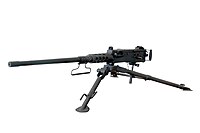
|
Heavy machine gun | Used by New English Army | |||
| Anti-materiel weapons | ||||||
| Boys anti-tank rifle Mk I | 
|
Anti-Material Rifle | ||||
| M1 Bazooka | 
|
Anti-tank rocket launcher | ||||
| M1 Mortar | 
|
Mortar | ||||
| Special Weapons | ||||||
| M2 Flamethrower | 
|
Flamethrower | ||||
Ground Vehicles
| Vehicle | Picture | Origin | Type | In service | Notes | |
|---|---|---|---|---|---|---|
| Armour | ||||||
| M2 Buford | 
|
Light Tank | 102 | Relegated to training operations, being exported to British colonies for auxiliary use. | ||
| M24 Sheridan | 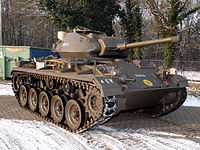
|
Light Tank | 1,028 | Thousands exported to Entente members | ||
| M46 Kearny | 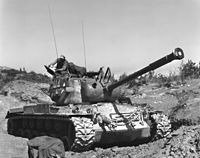
|
Medium Tank | 660 | |||
| Armoured Cars | ||||||
| M3 Scout Car | 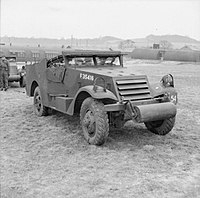
|
Armored Car | 2,875 | Originally produced by United States Army, variants exist globally | ||
| M8 Greyhound | 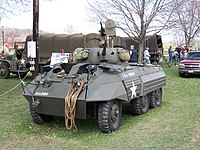
|
Armored Car | 907 | Originally produced by United States Army, variants exist globally | ||
| S1 Scout Car | 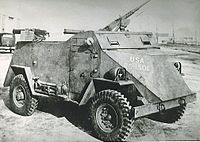
|
Armored Car | 24 | Produced by Ford's Australasian Division, used for training purposes. | ||
| Armored Carriers | ||||||
| M3 Half Track | 
|
Armoured Carrier | 2,280 | |||
| Universal Carrier | 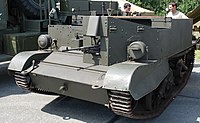
|
Armored Carrier | 1,520 | |||
| Trucks | ||||||
| Dodge WC Series | 
|
Truck | 6,422 | |||
| Unarmoured Vehicles | ||||||
| Willy's MB | 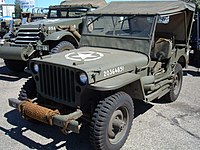
|
Utility Truck | 3,422 | |||
| Artillery | ||||||
| M39 Armored Utility Vehicle | 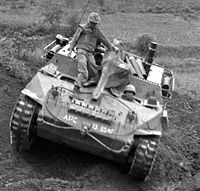
|
Artillery Tractor | 450 | Converted from Hellcat tractors | ||
| Fire Engines | ||||||
| Seagrave Fire Truck | 
|
Utility Truck | 1,028 | |||
| Mack Fire Truck | 
|
Utility Truck | 2,944 | |||
Aircraft
| Aircraft | Picture | Origin | Type | In service | Notes | |
|---|---|---|---|---|---|---|
| Fighter aircraft | ||||||
| Dassault Hurricane | 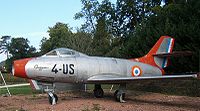
|
Fighter Jet | 264 | In active service | ||
| Lockheed P-80 Shooting Star | 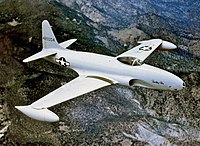
|
Fighter Jet | 566 | In active service | ||
| Lockheed F-94 Starfire | 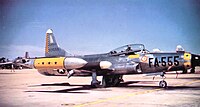
|
All-weather Interceptor Jet | 488 | In active service | ||
| Lockheed T-33 T-Bird | 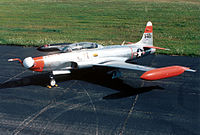
|
Trainer Jet | 120 | In active service, exported to entente members | ||
| Ryan FR Fireball | 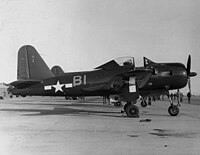
|
Fighter Airplane | 70 | Stockpiled, hundreds have been sold to British colonial provinces. | ||
| Helicopters | ||||||
| Sikorsky S-55 | 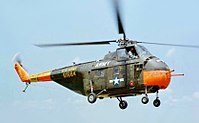
|
Utility Helicopter | 473 | Production underway, popular export to Entente | ||
| Sikorsky R-6, "Hoverfly" | 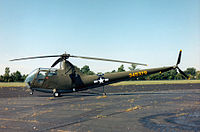
|
Helicopter | 125 | Set aside for civilian sale | ||
| Sikorsky H-5 | 
|
Search and Rescue Helicopter | 328 | Primarily used by Coast Guard Air Corps | ||
| Bell 47 H-13G | 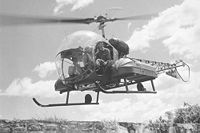
|
Medevac Helicopter | 82 | Some on loan to hospitals | ||
| Bell 47 H-13G | 
|
Medevac Helicopter | 82 | Some on loan to hospitals | ||
| Piasecki HUP Retriever | 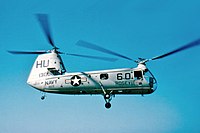
|
Transport Helicopter | 202 | Production ongoing | ||
| Hiller OH-23 Raven | 
|
Multi-role Light Helicopter | 336 | Used throughout New England Armed Forces for various purposes, exported and sold for civilian use | ||
Watercraft
| Vehicle | Picture | Origin | Type | In service | Notes | |
|---|---|---|---|---|---|---|
| Patrol Ships | ||||||
| PT-class | 
|
Patrol torpedo boat | 297 | |||
| Destroyer Escorts | ||||||
| John C. Butler-class | 
|
Destroyer Escort | 56 | 38 on loan to the United Kingdom, France and Brazil | ||
| Minesweepers | ||||||
| YMS1-class | 
|
Minesweeper | 76 | |||
| Aloe-class | 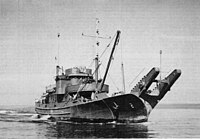
|
Net-laying ship | 7 | Three on loan to France | ||
| Cruisers | ||||||
| Manchester-class cruiser | 
|
Light Cruiser | 29 | 1 under repairs | ||
| Quincy-class cruiser | 
|
Light Cruiser | 14 | |||
| Aircraft Carriers | ||||||
| Essex-class | 
|
Aircraft Carrier |
|
|||
| Brooklyn-class | 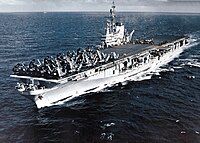
|
Aircraft Carrier |
|
|||
| Submarines | ||||||
| Balao-class | 
|
Fleet submarine | 102 | 18 on loan to Portugal, Sardinia-Piedmont and Greece | ||
| Gato-class | 
|
Fleet submarine | 52 | |||
| Tench-class | 
|
Fleet submarine | 78 | Produced at Boston Naval Yard, 12 on loan to Brazil | ||
| Frigates | ||||||
| Bay-class | 
|
Light surveillance frigate | 12USS New Jersey (BB-62) | |||
| Battleships | ||||||
| Iowa-class | 
|
Battleship |
|
|||
Demographics
Ethnic Groups
New England is comprised of people of many varying ethnicities. The vast majority of New English people are of European descent, however, many different ethnic identities persist between the European peoples whom have settled New England. In the census, there are listed the following options:
• Irish American
• Franco-American
• Italian American
• Polish American
• Jewish American
• German American
• African American
• Anglo-American
• Asian American
Languages
New England has established English as the official language of the Commonwealth of New England, and recognizes French and Deitsch in addition to indigenous languages. However, many families and communities in New England are bi-lingual, with Italian, Irish, German and Polish being spoken throughout many large parts of the New English Commonwealth and even functioning as a majority linguistically in some areas which have come to be attributed 'Little Italies' and 'Poletowns'. Among Anglo-Americans and those who are less attached to their ethnic identities the widespread use of second languages is controversial and advocacy groups exist for restrictions on signage and public events held in foreign languages.
Religion
The Commonwealth of New England is an officially secular nation with the Establishment Clause of the New England Constitution prohibiting the establishment of a national faith. However, as the vast majority of the New English population is Christian, moral laws, public holidays and even Blue Laws which prohibit work on Sundays are present in states throughout the Commonwealth of New England. After Christians, there exists a notable Jewish population in the country making up roughly six percent of the total population. Concentrated in southern New England, synagogues are common in many communities from New York city to northern New Jersey.
Economy
Commerce
By 1950, New England had entered a phase of economic prosperity not seen in the United States since before the Great Depression. With Europe in ruin in 1946, New English industry fell into heavy demand and soon began to flood the European markets, this allowed for the New English to pursue an expansion of its commerce sector that completely revolutionized the New English economy. Ports began to swell in size to support demand for manufactured products, many of which made from raw materials shipped in from British, French and Portuguese colonies. Both small businesses and major New English corporations have grown in the wake of the rise of New England as an economic powerhouse. In particular, New England has seen the growth of its own aviation, automobile, military-industrial, medical, textile and steel sectors which has led to historically low unemployment and rising wages.
Industry
Industry in New England has boomed over the past decade, first seeing rapid growth during the Second World War and due to government subsidies to prepare the economy for a potential war with the Democratic People's Federation, but increasingly to accommodate the massive demand for New English products worldwide. New English Steel, centered in Pennsylvania and Maine has come to be recognized as the finest in the free world next to Swedish steel. Textile industry in New England has also prospered with clothing being mass produced for domestic use and export across the world.
Agriculture
Though a smaller proportion of the economy than Industry or Commerce, Agriculture makes up a core part of the New English socio-economic foundation as New England is able to maintain near-self sufficiency for foodstuffs. Tariffs and subsidies are implemented to protect agricultural jobs, and while some export of New English agricultural products does occur, especially to Canada, the Agricultural sector remains primarily domestic. Agriculture in New England is centered around Dairy products, poultry, corn, hogs, fruits (in particular apples, blueberries, pumpkin, etc.), and seafood.
Organized Labor
Labor unions in New England are legal and regulated by the Federal government. Such labor unions advocate for worker's rights and protections, engage in collective bargaining and organize strikes and other peaceful protests. Syndicalist unions are explicitly banned in New England due to the role that they had in the downfall of the United States of America and the threat that is posed by allowing political organizations associated with the hostile Democratic People's Federation of America to the south would pose to national security. The largest union in New England is the American Federation of Labor, an organization that explicitly denounces any attempt by unions to go further than collective bargaining while still being a major advocate for labor reform in New England.
The AFL along with other major unions and many Democratic Party politicians advocate for a corporate system in which the Government mediates disputes between private enterprise and labor groups. This is widely popular in some parts of New England, however is opposed by advocates of free market capitalism.
Consumerism
Consumerism is a widespread phenomenon in New England which has led to a cultural and economic condition in the country where consumption is driven by cultural events. Holidays such as Christmas, Thanksgiving, Easter and the Fourth of July among others correspond with massive surges in consumption. It is believed by many economists that this culture of consumerism has had a profound impact on the economy by creating artificial demand around certain dates, and the economy has evolved to be shaped by this artificial demand.
Foreign Trade and Investments
Foreign trade and investments make up a considerable portion of the New English economy. Trade deals with the British and other Entente members have led to a majority of New English trade being between the British Commonwealth of Nations and other Entente members. Notable trade deals include the Franco-American Military Cross-Investment Compact which was signed during the Second World War, and while initially being more one sided as New England helped arm the French, this has gradually reversed course with the French providing armaments for the New English air force. New England has a special relationship with Ireland, with whom New England takes part in the Irish-American Partnership. In addition, New England has made several lucrative investments in Entente colonial ventures, and profits from selling colonial governments industrial equipment and military armaments.
Transportation and Infrastructure
Public Transportation
Highways
Electrification
Culture
Music
Music in the past decade has been built around the jazz and big band styles which are popular in New England. Artists like Rosemary Clooney, Count Basie, and Artie Shaw helped to define the musical era with their unique brand of entertaining crowds through their music. This was also the era of the Second American Civil War and the Second World War, and many musical acts over the past decade strived to reflect the pain that the country was going through while still remaining upbeat and positive about the impending future. By the end of the decade, songs by Jimmy Dorsey, Louis Armstrong, Bing Crosby, Nat King Cole and Frank Sinatra had come to characterize the sound of popular music in New England.
Fashion
Fashion in New England is dictated by popular trends, especially with regard to casual attire.
Men
Slim fitting suits, skinny ties, Letterman jackets, bowling shirts, saddle shoes and large rim glasses define the current popular trend in Mens' clothing, and there is a significant British influence on fashion in Boston and northern New England in particular. In New York City, New Jersey and Pennsylvania by contrast, there remains a more American influence on clothing with fedoras and black and white shoes being more common. This has led to the two styles being denoted as Harvard Style and New York Style.
Women
Among women, a more uniform transition in dress has been seen with the turn of the decade. To roughly summarize, New England Womens' fashion is characterized by tea length swing dresses with petticoats for fullness, slim sheath dresses and tailored suits, pencil or circle skirts, poodle skirts for teens, capri pants, high waisted jeans, peter pan collar blouses, twin set cardigan sweaters, swing coats in winter, kitten heels, saddle shoes, stiletto heels and small hats, headscarves, and hair flowers.
Literature
New England has a rich literary history, dating back to the Puritan sermons and devotional writings of Increase Mather (1639-1723) and his son Cotton Mather (1663-1728) during its early colonial era. In Puritan New England, education was highly valued, for it was through education (meaning theological study) that one came to know God. The region's great colleges and universities—Amherst, Bowdoin, Brown, Dartmouth, Harvard, Tufts, Williams, Yale—were all founded for the training of young men for the ministry. In time, their objective evolved and New England became a magnet for literati of all beliefs and opinions.
The best-selling American Dictionary of the English Language was written by Yale graduate Noah Webster. First published in 1828, Webster's 70,000-word dictionary was bought by hundreds of thousands of Americans every year—and still is bought in large volume in New England. He is buried in Grove Street Cemetery, New Haven CT.
Among the writers most closely associated with New England is Ralph Waldo Emerson (1803-1882). Emerson's beliefs in the mystical unity of nature and the divine, and Thoreau's championing of the simple life in tune with nature's laws, were radical in 19th-century Concord, Massachusetts. Today such Unitarian and ecological beliefs are accepted by many people around the world. Along with other writers, Emerson was a founder of the Transcendental movement, and had more effect on American literature than any other New Englander. Emerson and his family are buried on Authors Ridge in Sleepy Hollow Cemetery, Concord MA.
Henry David Thoreau (1817-1862), a friend of Emerson's and graduate of Harvard, is best remembered for Walden, or Life in the Woods(1854). This journal of observations and opinions written during his solitary sojourn (1845-47) on Walden Pond in Concord, Massachusetts, may be the best-known book on New England. Thoreau was also known for Civil Disobedience, and his accounts of walking trips entitled The Maine Woods and Cape Cod. You can walk the Emerson-Thoreau Amble, the path that he and his mentor Emerson walked to Walden Pond, where you can visit the site of Thoreau's cottage. He's buried on Authors Ridge in Sleepy Hollow Cemetery, Concord MA.
Nathaniel Hawthorne (1804-1864), was born in Salem, Massachusetts, attended Bowdoin College in Maine, then pursued a career which produced The Scarlet Letter, Twice-told Tales, and The House of the Seven Gables. Hawthorne is thought by many to be the writer who established the truly American short story. You can visit The Old Manse and The Wayside in Concord MA, where he and Sophia Hawthorne lived, and also Arrowhead, Herman Melville's house in Pittsfield MA. The Hawthornes are buried on Authors Ridge in Sleepy Hollow Cemetery, Concord MA.
Hawthorne's contemporary, Edgar Allen Poe (1809-1849), was born in Boston, but pursued his career in Virginia.
Among New England poets, the 1800's belonged to Henry Wadsworth Longfellow (1807-1882). Born in Portland, Maine, he attended Bowdoin College, taught at Harvard, and lived in a big yellow house on Brattle Street in Cambridge MA which is now a historic landmark. Several of Longfellow's poems are so much a part of Americana that many forget that he wrote them: Paul Revere's Ride, The Song of Hiawatha, The Village Blacksmith, Excelsior, and The Wreck of the Hesperus are among the better-known ones. He is buried in Mount Auburn Cemetery, Cambridge MA.
Preceding and during the Civil War, New England writers such as abolitionist William Lloyd Garrison (1805-1879) and John Greenleaf Whittier (1807-1892) contributed their literary and poetic talents to the struggle to end slavery.
Few Americans realize that Samuel Clemens (1835-1910), better known as Mark Twain, settled in Hartford, Connecticut at the age of 35. Though Missouri-born, Twain wrote his masterpieces Tom Sawyer and Huckleberry Finn in Hartford, as well as The Prince and the Pauper, and A Connecticut Yankee in King Arthur's Court. Touring his grand Victorian mansion at Nook Farm is the high point of a visit to Hartford. He is buried in Woodlawn Cemetery, Elmira NY.
Robert Frost (1874-1963) was born in San Francisco, but his family had lived in New England for generations. He moved to New England early in life, attended Dartmouth and Harvard without taking a degree, and later returned to teach poetry at Amherst and Harvard. His many books capture the quintessence of New England living and the Yankee soul. You can visit his farms, The Frost Place in Franconia NH, the Robert Frost Farm in Ripton VT, and The Robert Frost Farm in Derry NH. Frost is buried in Old Bennington VT.
Source: New England Travel Planner
Media
Press
Radio
Currently, New England exists within an era of radio in the where it is the dominant electronic home entertainment medium. It began with the birth of commercial radio broadcasting in the early 1920s and has so far persisted, though recently television gradually has begun to challenge radio as the medium of choice for scripted programming, variety and dramatic shows.
Radio was the first broadcast medium, and people regularly tune-in to their favorite radio programs, and families gather to listen to the home radio in the evening. According to a 1947 W. B. Clark survey, 82 out of 100 New English were found to be radio listeners. A variety of new entertainment formats and genres were created for the new medium, many of which have now begun to migrate to television: radio plays, mystery serials, soap operas, quiz shows, talent shows, daytime and evening variety hours, situation comedies, play-by-play sports, children's shows, cooking shows, and more.
Television
Currently, there exist four major broadcasting networks in New England. The National Broadcasting Company (NBC), the Columbia Broadcasting System (CBS), the Commonwealth Broadcasting Network (CBN) and the Canadian Broadcasting Corporation (CBC).
The 1950 season became the first in which primetime was entirely covered by the networks. It was also the inaugural season of the Nielsen rating system. Late in the season, the nationwide link was in service and, for the first time ever, residents in the states of Maine, New Hampshire and Vermont, access was available to the Canadian Broadcasting Corporation's television programs.
Sport
Major League Baseball
Established in 1947, the New England Major League Baseball Association organized a new league of baseball teams throughout the New England Commonwealth. Some notable former American MLB teams joined the new league, such as the New York Yankees, Brooklyn Dodgers and Boston Redsox, however many of these teams were newly organized and there exists at least one team in each state. So far the New York Yankees have won two World Series championships followed by the Brooklyn Dodgers and Boston Red Sox whom have won one each.
Symbols
New English symbolism is seen in cultural iconography, native cuisine and native wildlife. Such icons vary from state to state, whilst others are ubiquitous in New England.
Cultural Icons
Cultural Icons ubiquitous throughout New England include the Pilgrim, the Puritan Preacher and the Cornucopia. Thanksgiving is an integral holiday to the New English heartland and a massive part of New England's cultural heritage with massive parades and festivities ensuing to commemorate the occasion. The American Christmas, as it had come to take shape during the 1920s has persisted somewhat in New England with mass festivities
Baseball, once a symbol the wider United States, remains the most popular sport in New England, nearly every high school and college has its own baseball team, and the New England Major League Baseball is by far the sport with the largest following in the country. Skiing is also an incredibly popular in New England with access to several mountainous areas to pursue the sport.
Native Cuisine
Cuisine in New England is greatly shaped by the nation's geography. The New English dessert for example is known for Blueberry, Pumpkin and Apple pies. New England cuisine is also characterized by boiled meals, particularly boiled seafood such as lobster, oysters and mussels. WIP
Sources: https://newengland.com/today/living/trivia/state-symbols-of-new-england/ & https://newengland.com/today/living/new-england-nostalgia/75-classic-new-england-foods/
Native Wildlife
Source: https://newengland.com/today/living/trivia/state-symbols-of-new-england/
Public Holidays
| Vehicle | Picture | Origin | Type | In service | Notes | |
|---|---|---|---|---|---|---|
| Command and Replenishment Ships | ||||||
| Northampton-class | 
|
Command Ship | 4 | Based on heavy-cruiser designs | ||
| Chester-class | 
|
Oiler Ship | 17 | |||
| Dithmarschen-class | 
|
Oiler Ship | 5 | |||
| Type C2-class | 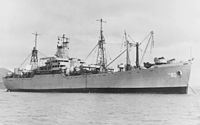
|
Ammunition Ship | 7 | |||
| Rescue Ships | ||||||
| Diver-class | 
|
Rescue and salvage ship | 11 | |||
| Hospital Ships | ||||||
| New Haven-class | 
|
Hospital Ships | 5 | |||
| Date | Name | Holiday | Notes |
|---|---|---|---|
| 1 January | New Years' Day | ||
| 17 February | George Washington's Birthday | ||
| 10 April | Good Friday | ||
| 17 April | Patriots' Day | ||
| 25 May | Memorial Day | ||
| 22 June | Victory Day | Commemorating the Entente victory in the Second World War | |
| 4 July | American Independence Day | ||
| 16 July | UDI Day | ||
| 7 September | Labor Day | ||
| 12 October | Columbus Day | ||
| 26 November | Thanksgiving | ||
| 25 December | Christmas Day |
- ↑ "Appendix B: Two–Letter State and possession Abbreviations". Postal Addressing Standards. Washington, D.C.: United States Postal Service. May 2015. Archived from the original on March 5, 2018. Retrieved March 3, 2018.
- ↑ Jensen, Merrill (1959). The Articles of Confederation: An Interpretation of the Social-Constitutional History of the American Revolution, 1774–1781. University of Wisconsin Press. pp. xi, 184. ISBN 978-0-299-00204-6.
- ↑ "Annual Estimates of the Resident Population for the United States, Regions, States, and Puerto Rico: April 1, 2010 to July 1, 2019". 2010-2019 Population Estimates. United States Census Bureau, Population Division. December 30, 2019. Retrieved January 27, 2020.
- ↑ 4.0 4.1 4.2 "State Area Measurements and Internal Point Coordinates". Washington, D.C.: U.S. Census Bureau. Archived from the original on March 16, 2018. Retrieved March 3, 2018.
... provides land, water and total area measurements for the 50 states, the District of Columbia, Puerto Rico and the Island Areas. The area measurements were derived from the Census Bureau's Master Address File/Topologically Integrated Geographic Encoding and Referencing (MAF/TIGER®) database. The land and water areas, ... reflect base feature updates made in the MAF/TIGER® database through August, 2010.
- ↑ "State and Local Government Finances and Employment" (PDF). United States Census Bureau. 2012. p. 284. Archived from the original (PDF) on October 17, 2011. Retrieved July 8, 2013.
Cite error: <ref> tags exist for a group named "upper-alpha", but no corresponding <references group="upper-alpha"/> tag was found










